Horowhenua Success Stories
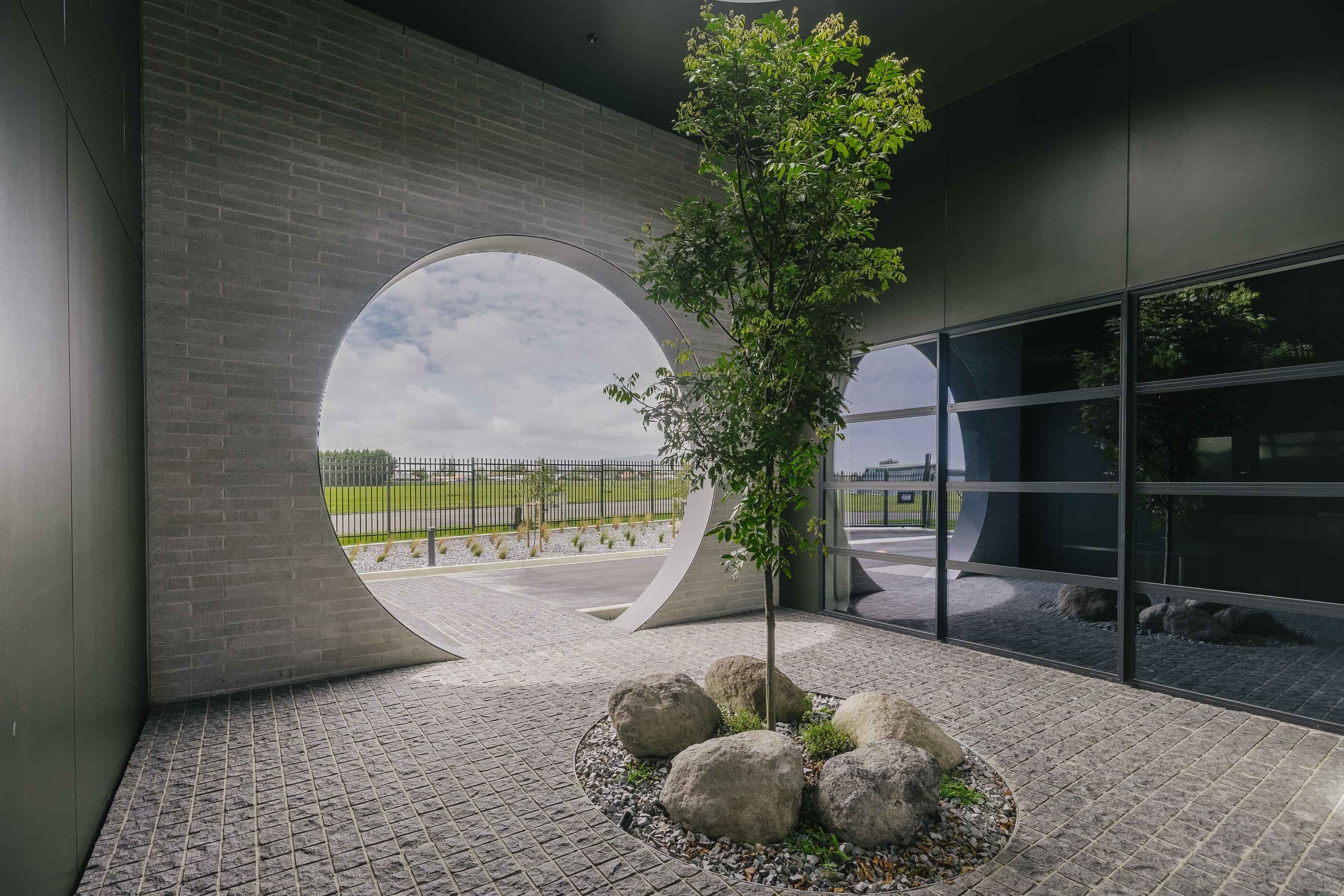
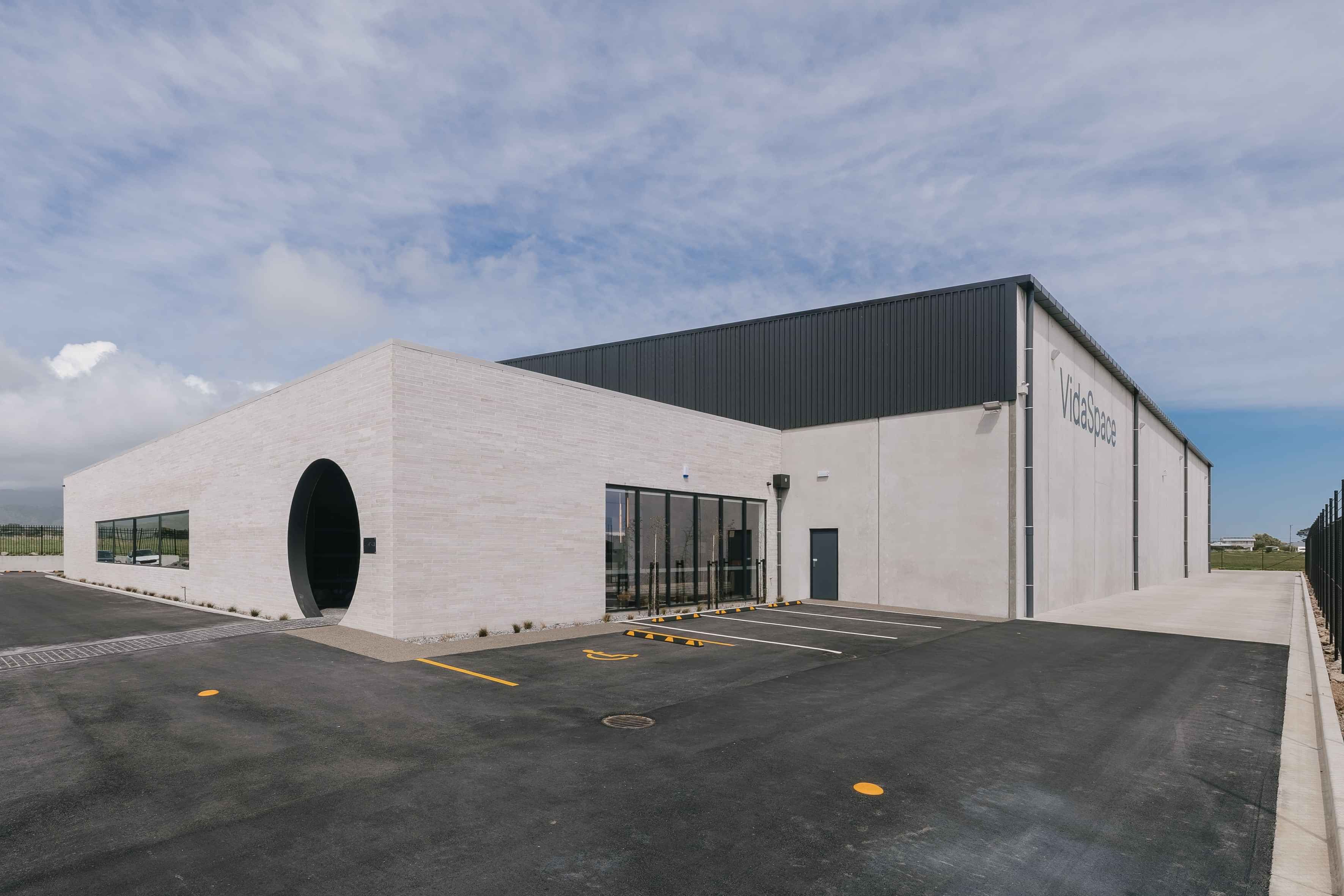

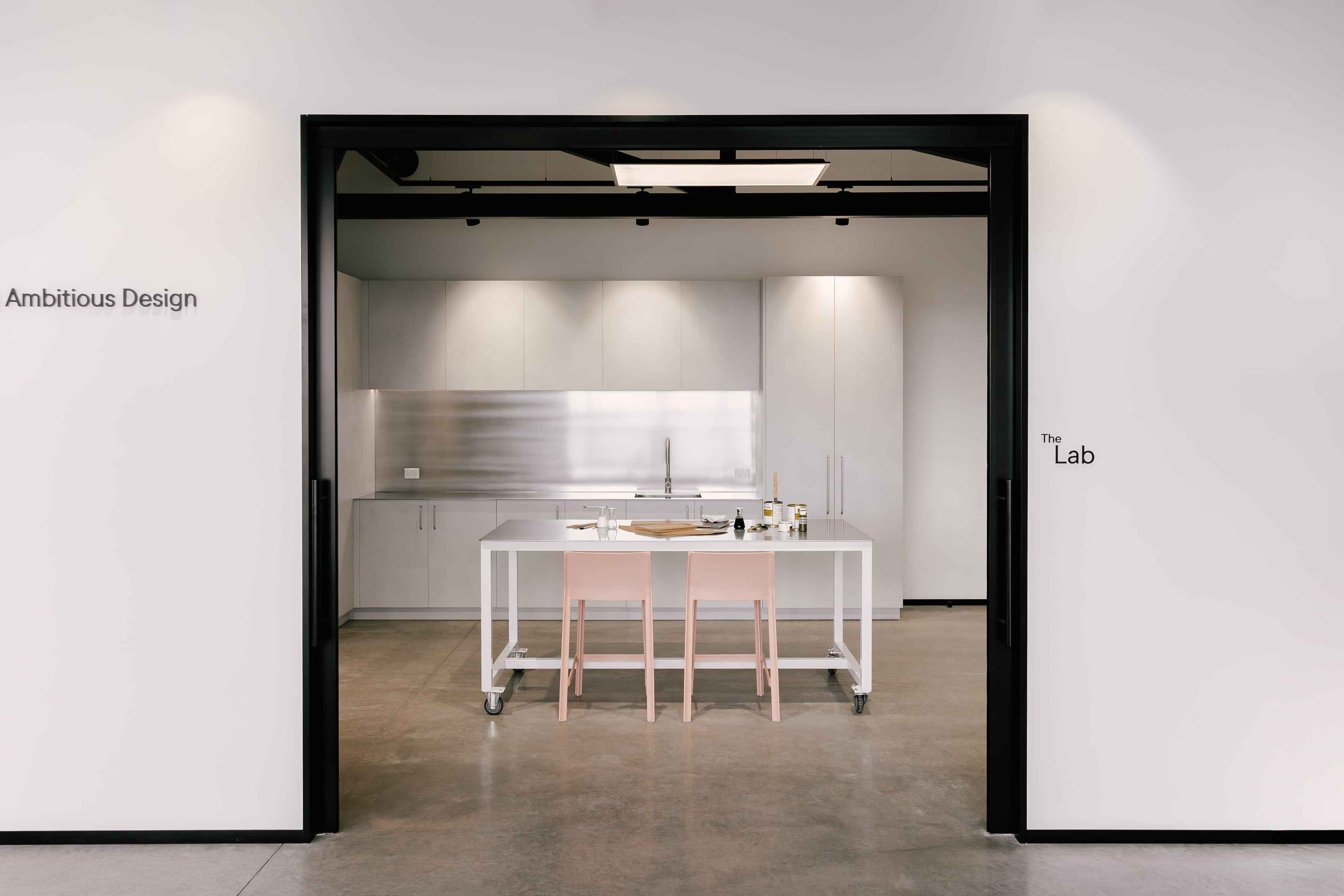
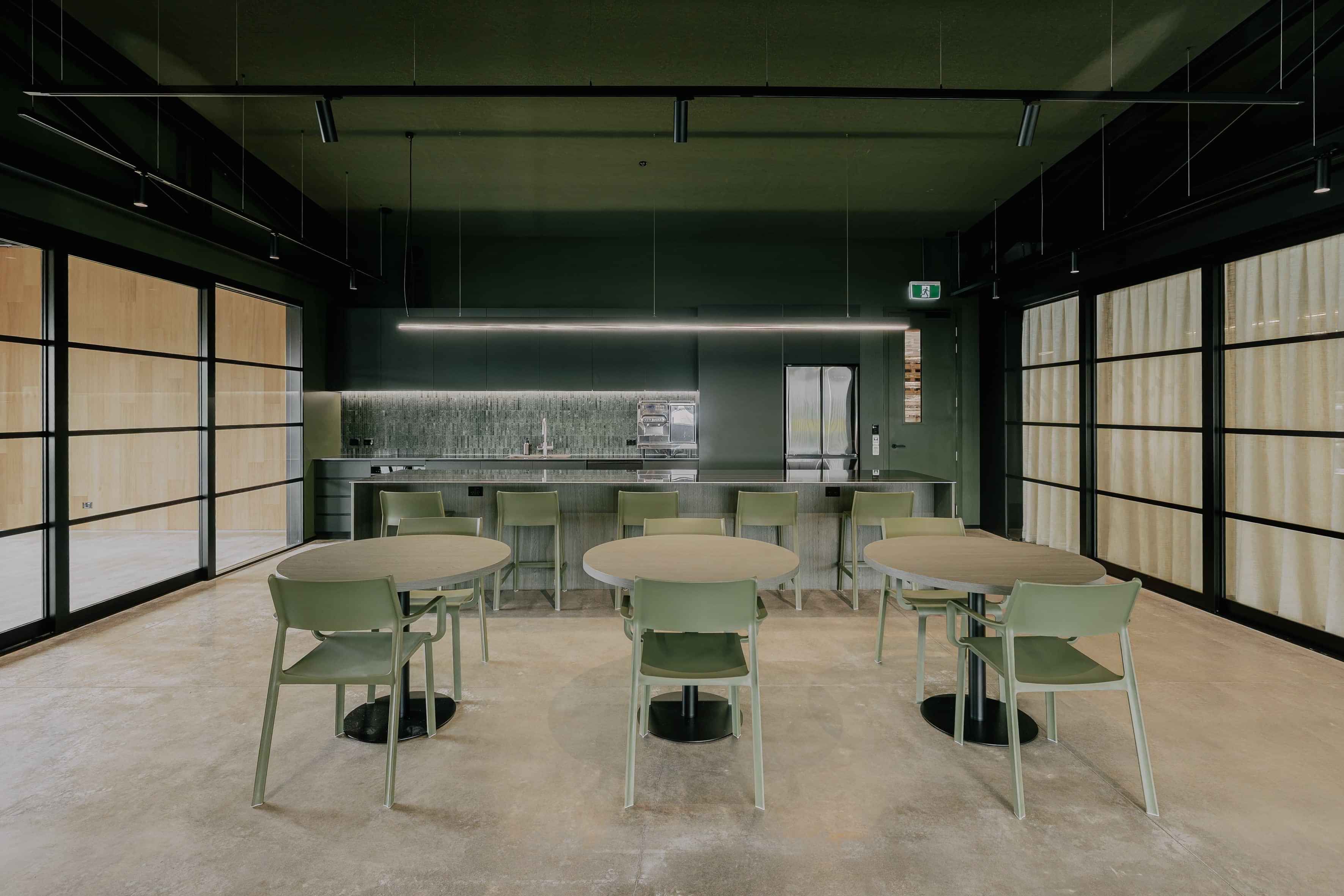
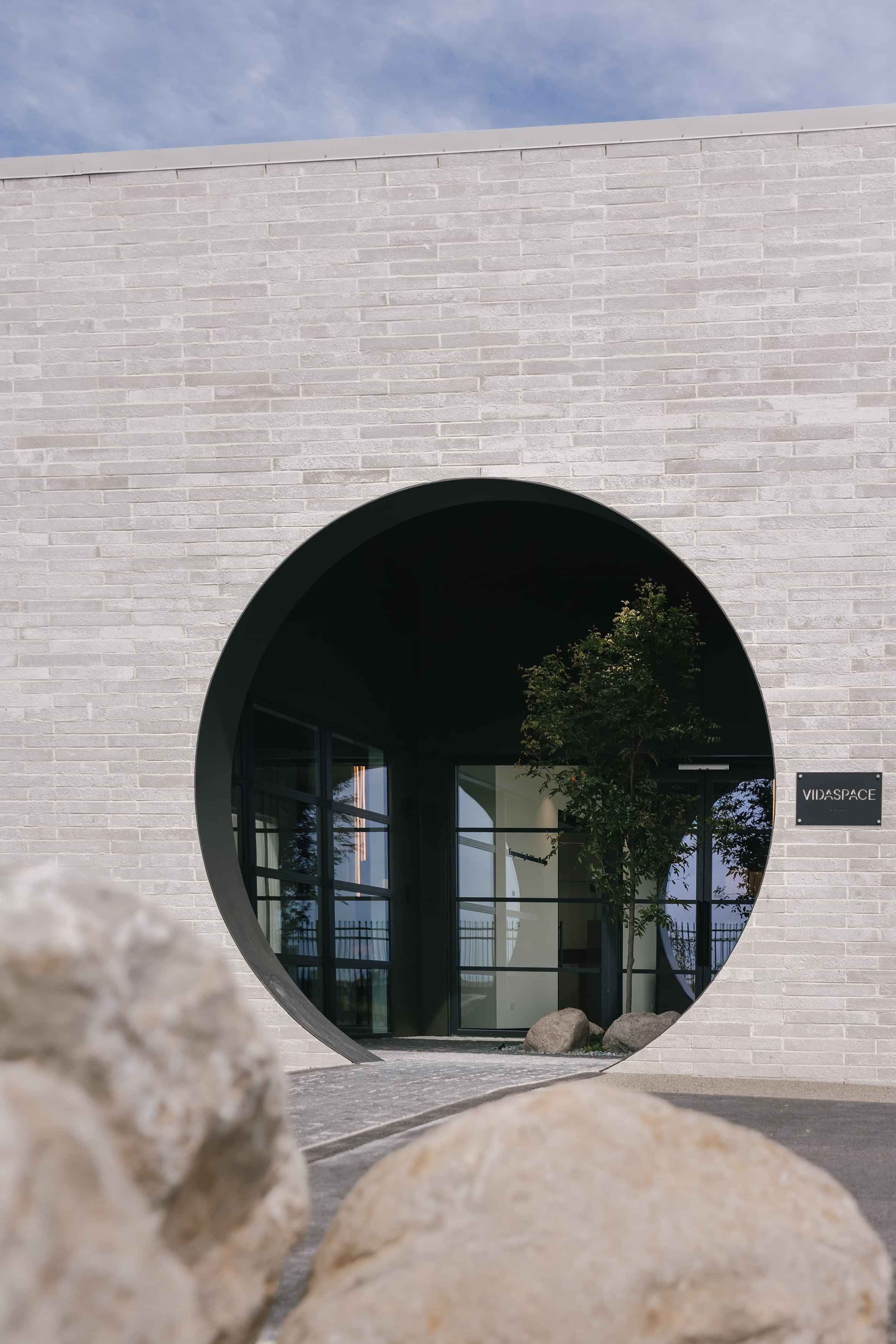
VidaSpace
Case Study: VidaSpace: A National Interiors Brand Growing From the Heart of Horowhenua
When The Horowhenua Company Ltd (THCL) visited VidaSpace’s new national headquarters in Levin, the team expected a tour. What they found was a compelling example of national ambition, smart strategy and long-term commitment paying off.
A Family Business Reinvented
VidaSpace’s story stretches back more than three decades to ATS Timber, a family-owned sawmilling and native timber business founded by the Simmons family. Over the years, ATS supplied joiners and building merchants around the motu, growing from a small Levin workshop into a nationwide merchant supplier.
However, by the late early 2010s, market pressures drove the family to reassess their future in the market. This led to a pivot away from commodity timber towards design-led, architect-specified products for residential and commercial interiors.
That shift became VidaSpace, a brand built on quality, differentiation and personal involvement with projects rather than wholesale volume through merchants and retailers. Starting with a small, rented Auckland office in 2015, the business has grown into a nationwide network with showrooms in Auckland, Wellington and Christchurch, supplying premium homes and luxury developments in areas such as Auckland, Central Otago, and Canterbury.
VidaSpace have been involved in residential and commercial projects all around the New Zealand including prestigious ones like – Intercontinental Hotel, Millbrook, Tara Iti, Mt Cardrona Station and Hotel Indigo.
Investing Big in Levin
In October 2025, Vidaspace opened its new purpose-built headquarters and warehouse on Enterprise Drive in Levin. Once used for asparagus and hay, then as a sawmill yard, the site now hosts a high-stud, design-driven commercial facility that rivals anything in the major centres.
The new building was constructed ahead of schedule and acts as both a logistics hub an immersive showroom and product development space. Every surface tells a story of VidaSpace’s capabilities: engineered oak floors, acoustic wall panelling, timber veneer panels, reclaimed wood and laminate panels.
The space demonstrates that premium interior design can thrive in regional Aotearoa.
The warehouse is currently only half-racked, leaving significant room for future expansion as VidaSpace scales its product offering, particularly its newly launched real-wood look and decorative panel range sourced from Belgium.
A Business Growing Despite a Downturn
While national residential consents have fallen by roughly 30% over the past three years, VidaSpace has continued to grow, develop and increase market share. Its focus on high-end residential and architectural work and covering a wide range of price points from entry specification through to high-end luxury finishes that retail for up to $2,000m2.
Increasingly, VidaSpace sells under its own private-label brand to protect intellectual property and strengthen market presence with a significant stock holding at the Levin HQ plus a strong reputation in the market for delivering bespoke projects to meet the needs of interior designers and their clients.
Building People, Skills and Regional Value
VidaSpace employs around 20 staff nationwide, with up to 12 based in Levin across sales, marketing, finance and operations; high-value roles rarely found in the districts industrial areas. They are continually investing in the development of the team with training across all roles in the business including a recent investment in bringing LEAN principles into the operations of the business to maximise the efficiency and potential from this new facility.
Discussions during the site visit highlighted strong alignment to attracting skilled workers, supporting high-value industries, and showcasing Horowhenua as a district where ambitious businesses can scale nationally.
A Regional Success Story with National Reach
VidaSpace’s investment demonstrates confidence in Levin’s connectivity, cost advantages and emerging talent base. More importantly, it shows that businesses with national aspirations can be designed, led and grown from Horowhenua.
As THCL continues to support economic development across the district, VidaSpace stands as a powerful example: premium brands don’t need to leave the district to succeed, they have built their future right here.
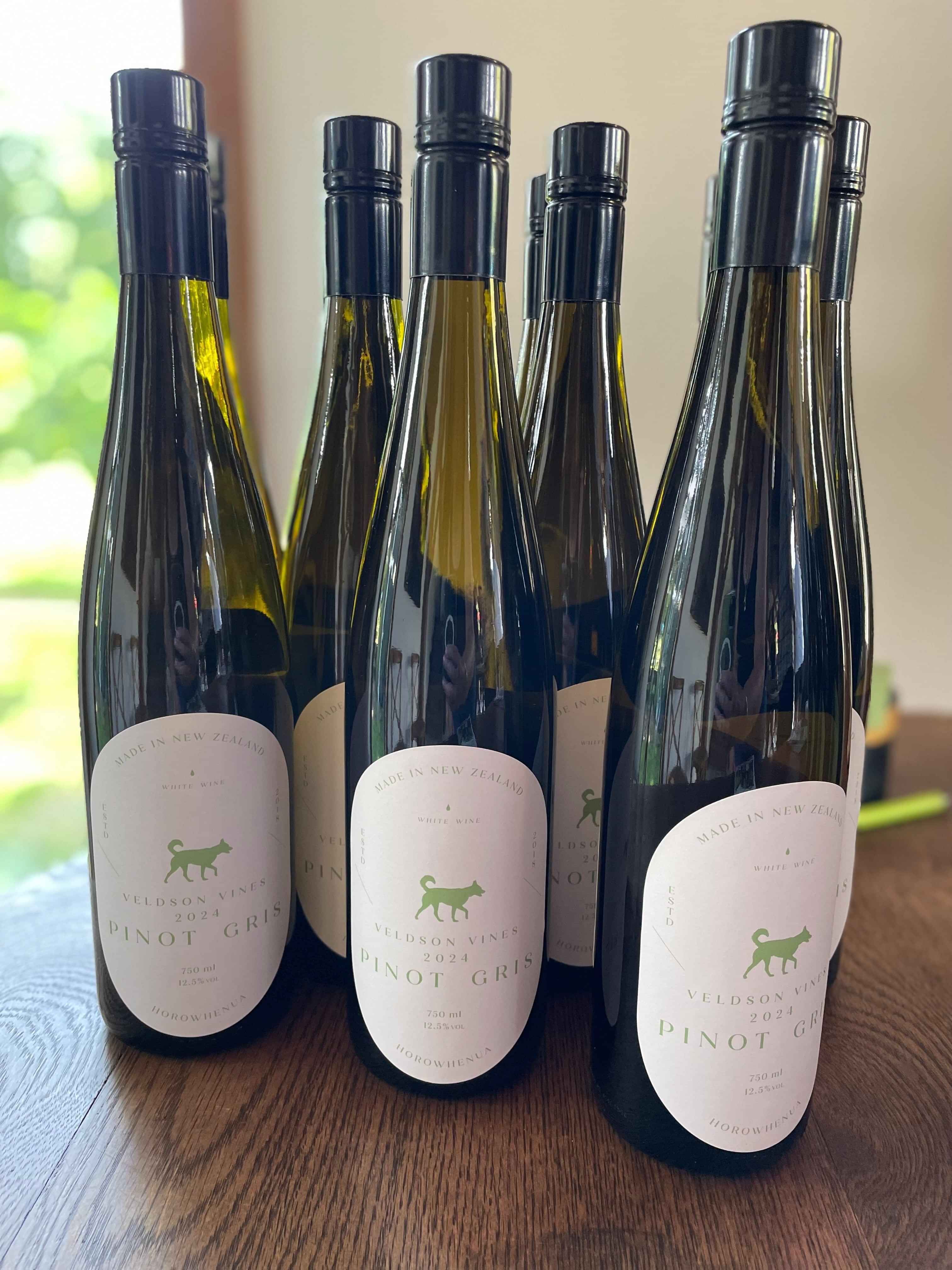
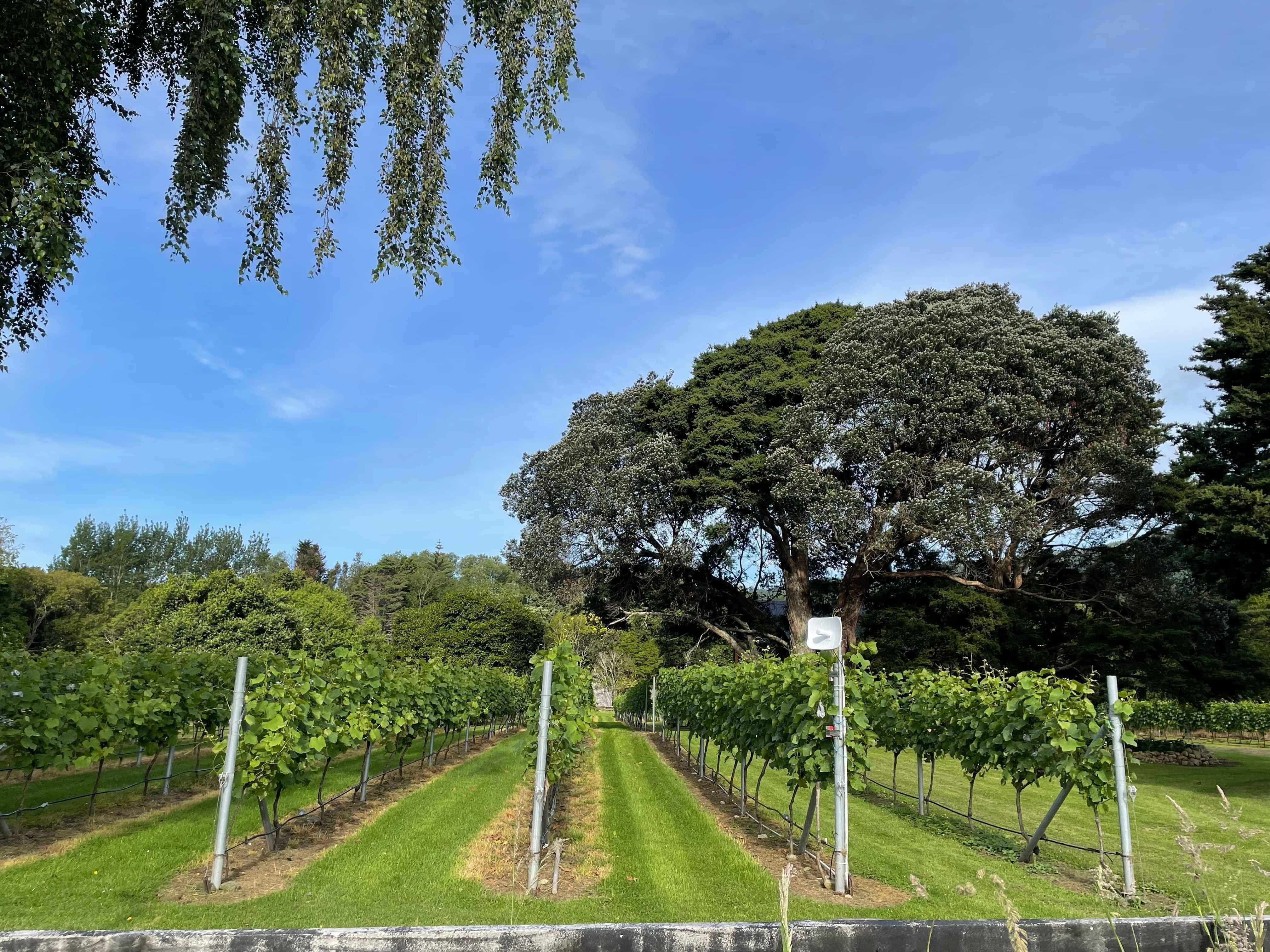
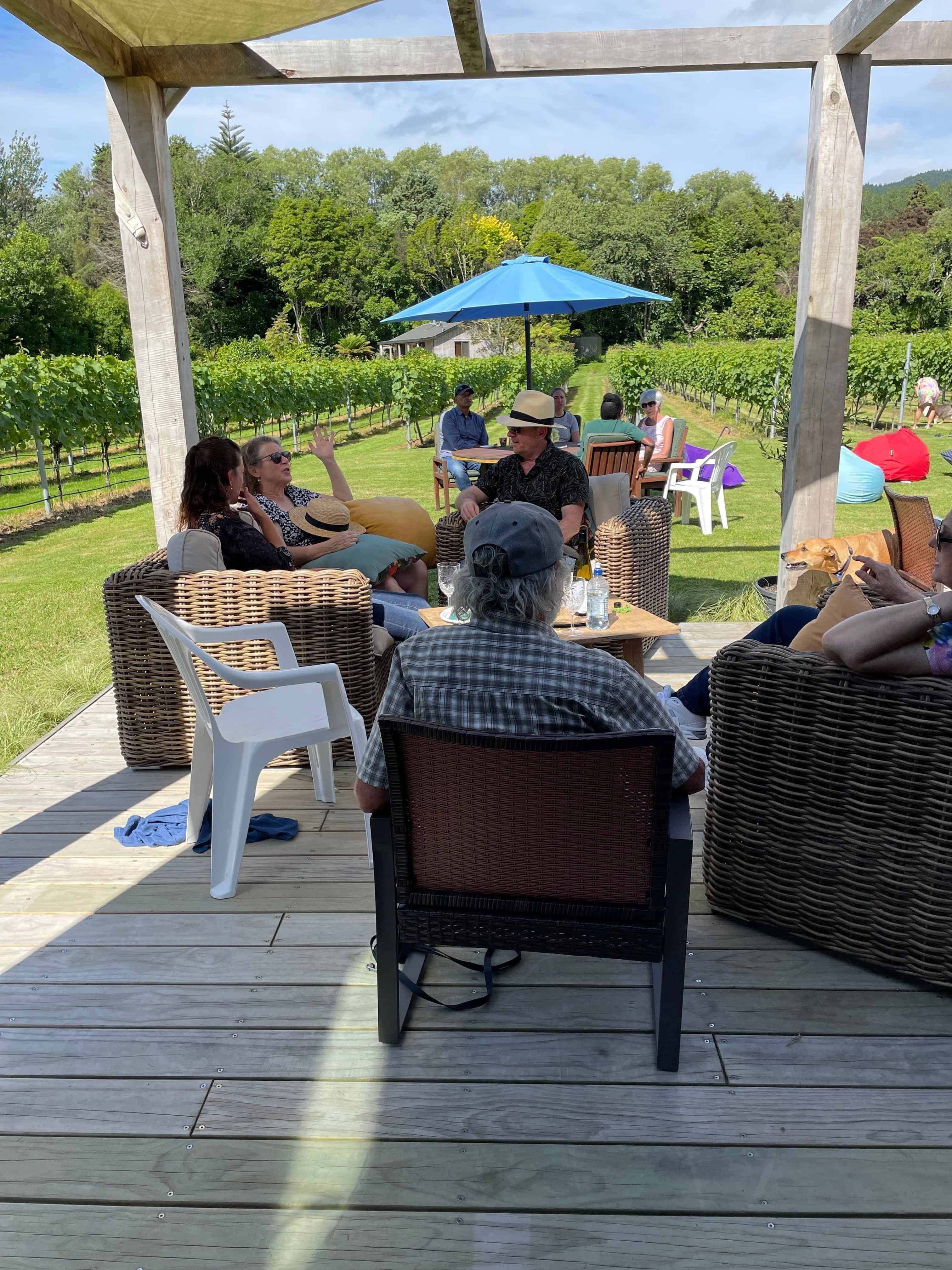
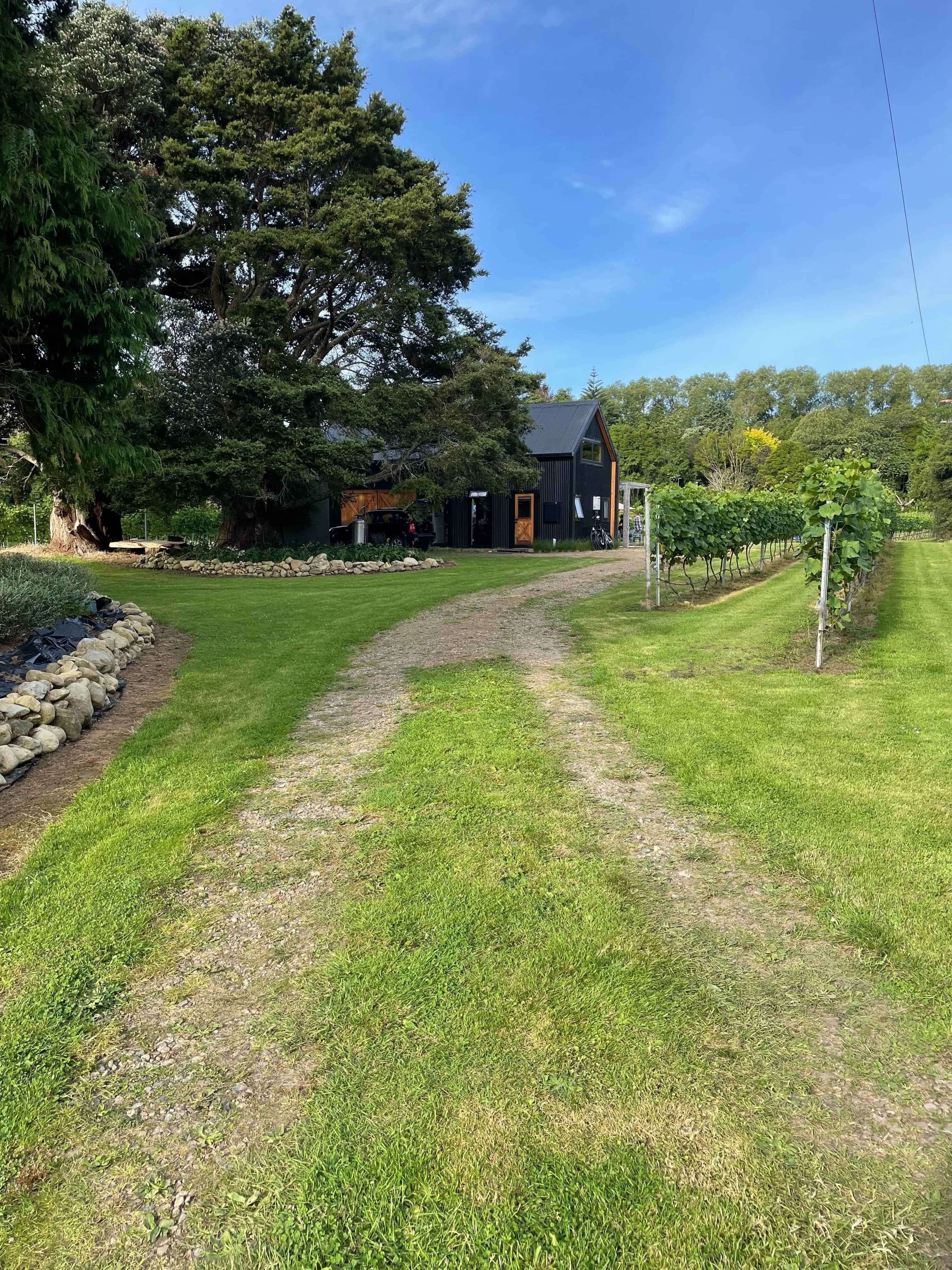

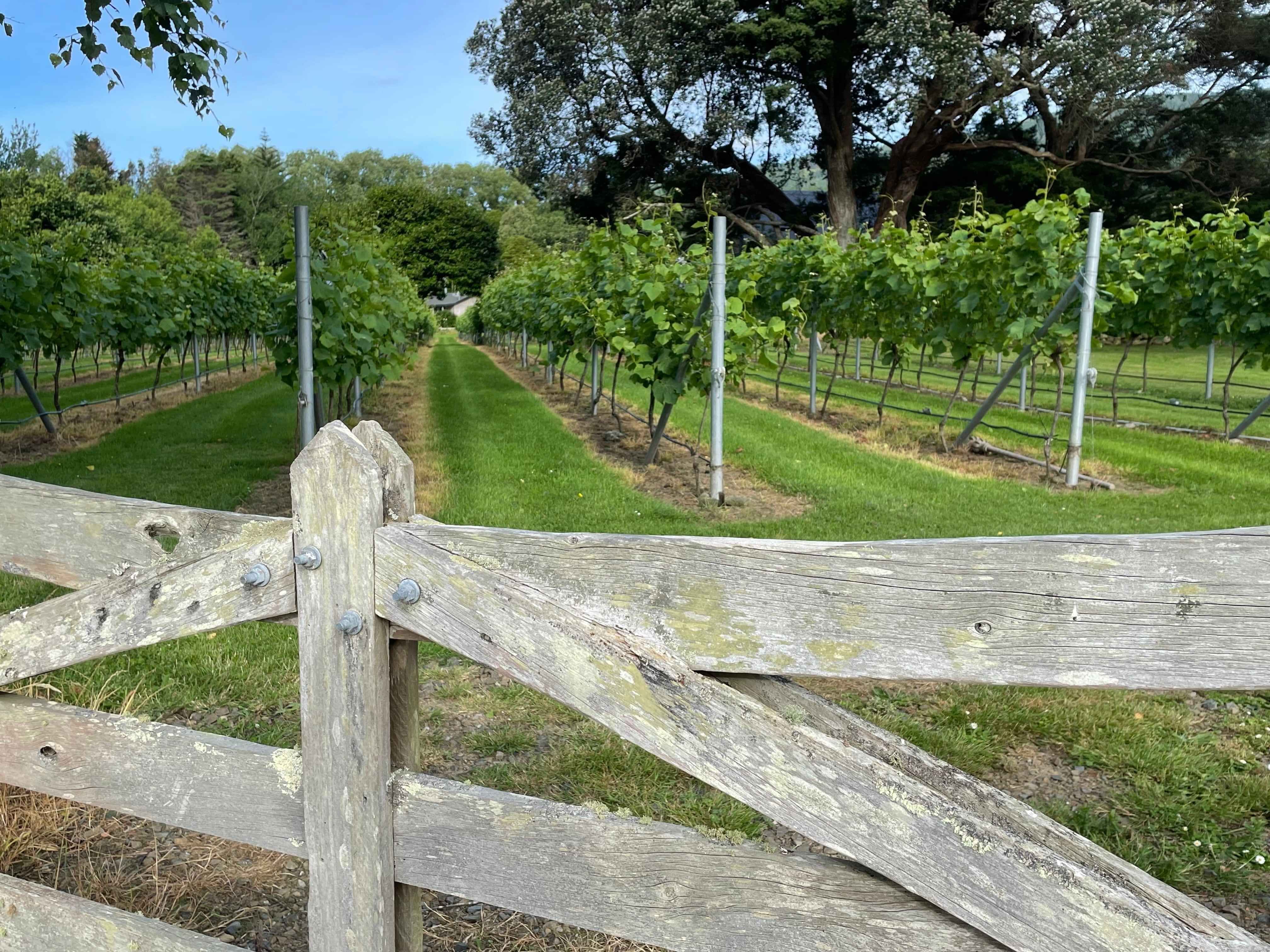

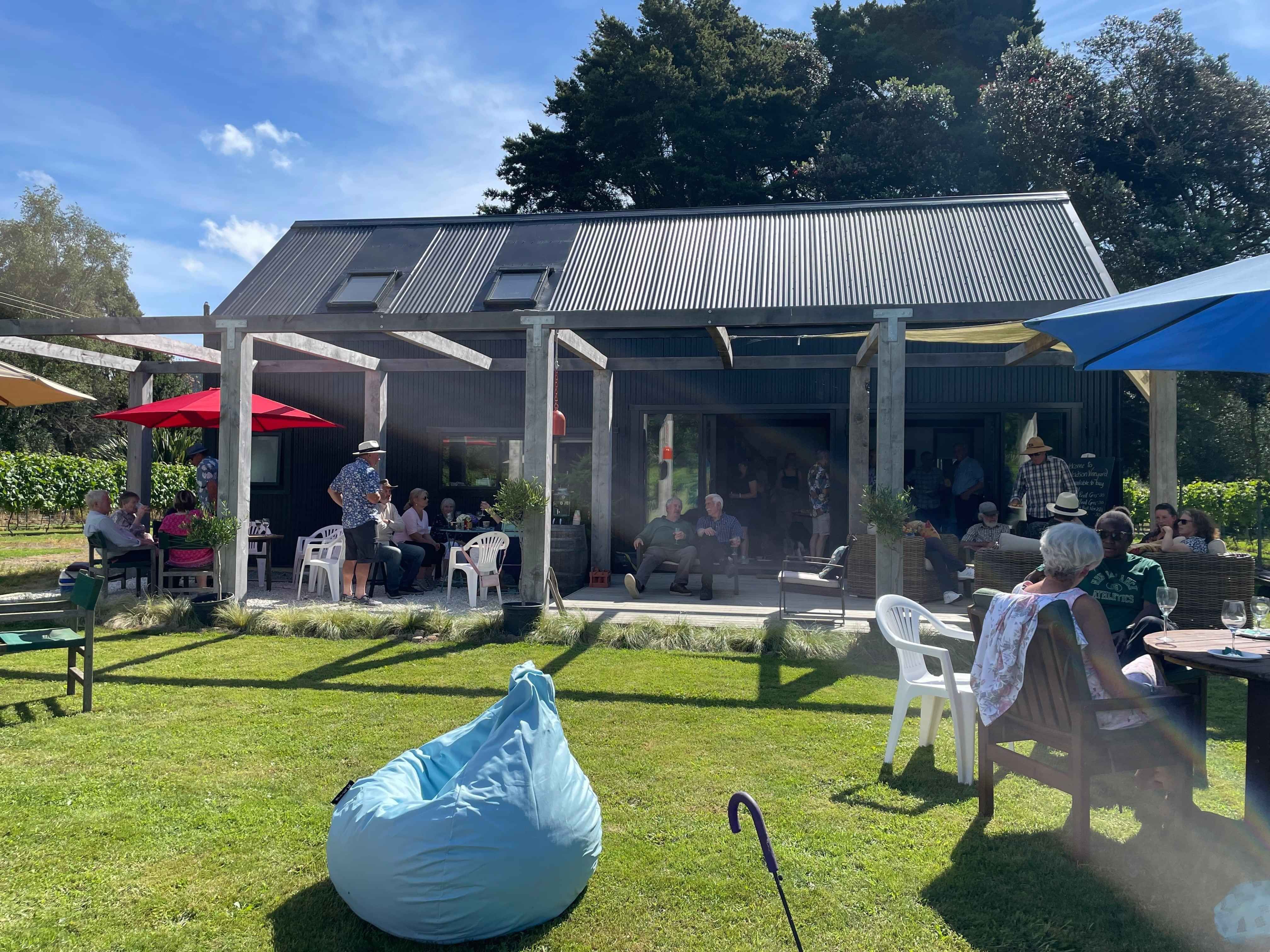
Veldson Vines
A Dream Ripened in the Valley
Case Study: Veldson Vines — A Dream Ripened in the Valley
How a Levin couple turned a quiet vision into a boutique vineyard and navigated the challenges of climate, craft, and a total crop loss in 2025.
1. What inspired the creation of Veldson Vines?
In 2018, long-time Levin hospitality operators Sid Richardson and Pat van der Velden closed the doors to Whispers Restaurant, a beloved local café they had run for years. After decades of serving the community, they sought a quieter, more personal dream: transforming part of their North Manakau Road property into a small boutique vineyard.
Their land is located within Manakau’s renowned microclimate, an area once described by National Geographic as having “something special”, sparking Sid’s curiosity about what could grow there. The dream took shape as the couple travelled through wine regions abroad, observing small producers who created beautiful wines rooted deeply in place.
2. How did they decide what to plant?
To understand the land’s potential, Sid and Pat consulted Kate and Tim Gibbs of Stanmore Farm in Te Horo. Their research pointed toward Pinot Gris as a grape varietal ideally suited to the valley’s:
Microclimate (warm days, cool nights)
Rocky soil profile, formerly an old riverbed
Drainage and airflow, key to vine health
These factors combined to create an environment where Pinot Gris could thrive, at least on paper.
3. What challenges did they face in establishing the vineyard?
Transforming the land into a working vineyard proved to be a long, hands-on, deeply physical undertaking. The former riverbed contained thousands of stones, each one removed by hand over months of preparation. Planting the vines became a labour of love, with every row demonstrating the couple’s tenacity and belief in the vision.
Key Data:
Planting year: 2019
Varietal: Pinot Gris
Block size: Boutique scale
Establishment difficulty: High - manual removal of stones, infrastructure installation, terracing, drainage planning
4. Who supported the winemaking process?
The next pivotal decision was choosing a winemaker. They engaged Matt Goode, a winemaker with strong regional ties and deep respect for the land. Matt’s approach blends local knowledge with classical French inspiration, bringing both science and artistry to the vineyard.
Matt had followed the vineyard’s progress for years, his father Carl, a frequent Tararua Range tramper, often passed the property and observed the care going into every stage of development.
5. How has the vineyard become part of the landscape and community?
Central to the Veldson Vines experience is The Black Barn, a tasting space designed to feel timeless, nestled naturally into the valley as though it had always been there.
The barn features benches and doors crafted from a macrocarpa tree that originally stood at the property’s entrance, embedding the space with personal history and a sense of continuity.
The vineyard has quietly hosted two family weddings, Sid and Pat’s own, and their daughter’s, cementing its identity as a place of gathering, celebration, and connection.
6. What setback did Veldson Vines face in 2025?
Despite years of careful cultivation, Veldson Vines suffered a total loss of their 2025 Pinot Gris crop due to mould, the result of extended humidity and unseasonal rainfall patterns affecting the region.
Impact Snapshot:
Harvest loss: 100% of 2025 grapes
Cause: Mould pressure during critical ripening weeks
Result: No vintage bottled for the year
This significant setback underscores the vulnerability of boutique vineyards especially those operating in emerging wine regions to climate volatility. It also highlights the resilience required to continue producing high-quality wines in a changing environment.
7. What comes next for Veldson Vines?
With the vines maturing and the tasting room nearing completion, Sid and Pat are turning their focus to welcoming guests into the space they have lovingly built over seven years.
They envision the vineyard as more than a place to taste wine, it is a meeting place, a landscape that brings people together through story, care, and craftsmanship.
As Sid reflects:
“We see our vineyard as a space of coming together, somewhere to share a wine that is truly unique… grown in this beautiful valley.”
Key Takeaways
A Levin couple transitioned from hospitality to viticulture, guided by place and passion.
Pinot Gris was selected specifically for the valley’s microclimate and soil characteristics.
Establishing the vineyard required immense manual labour and expert collaboration.
A total crop loss in 2025 challenges the vineyard’s path forward but showcases their resilience.
The upcoming tasting room marks a new chapter, centred on community connection and celebration.

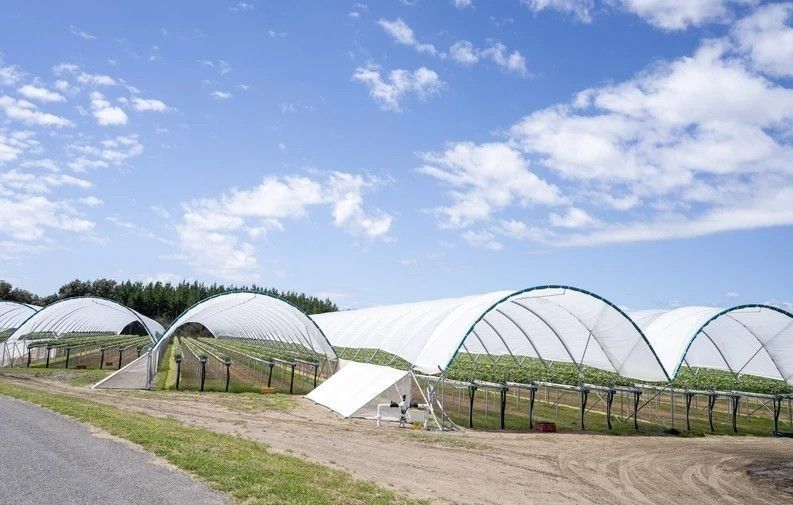
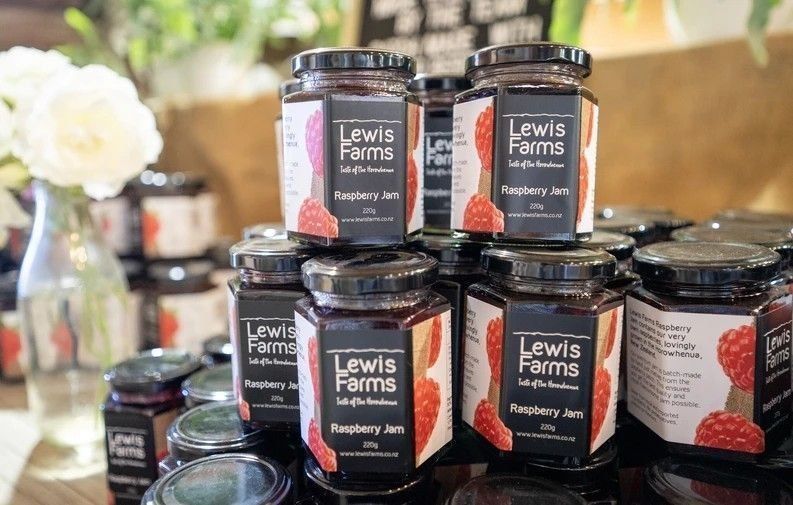
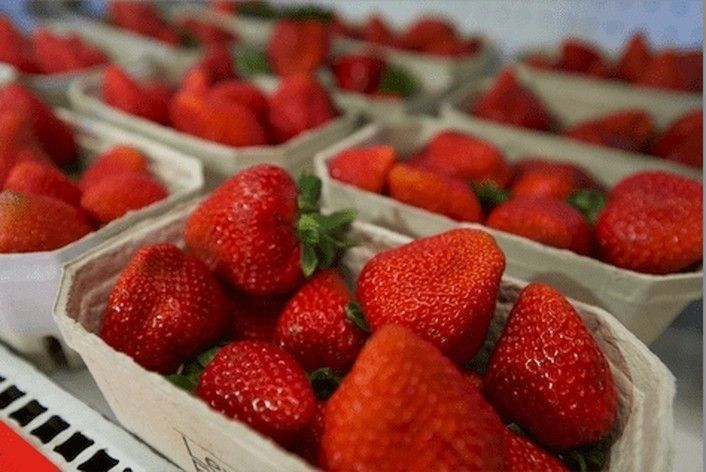
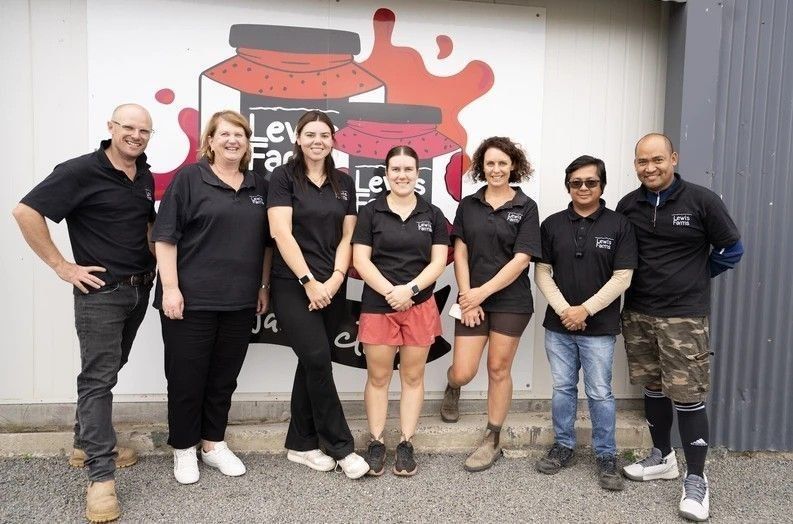

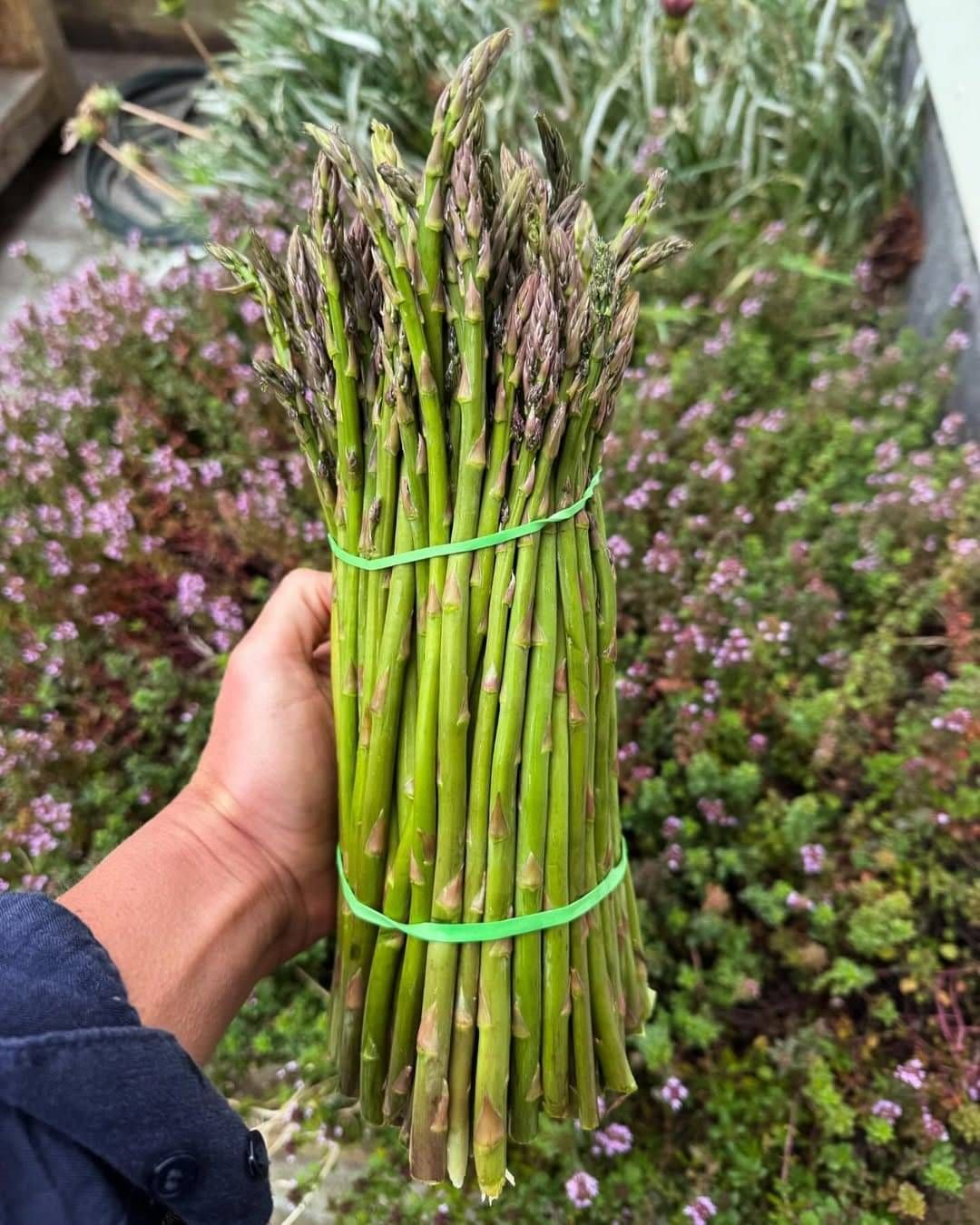
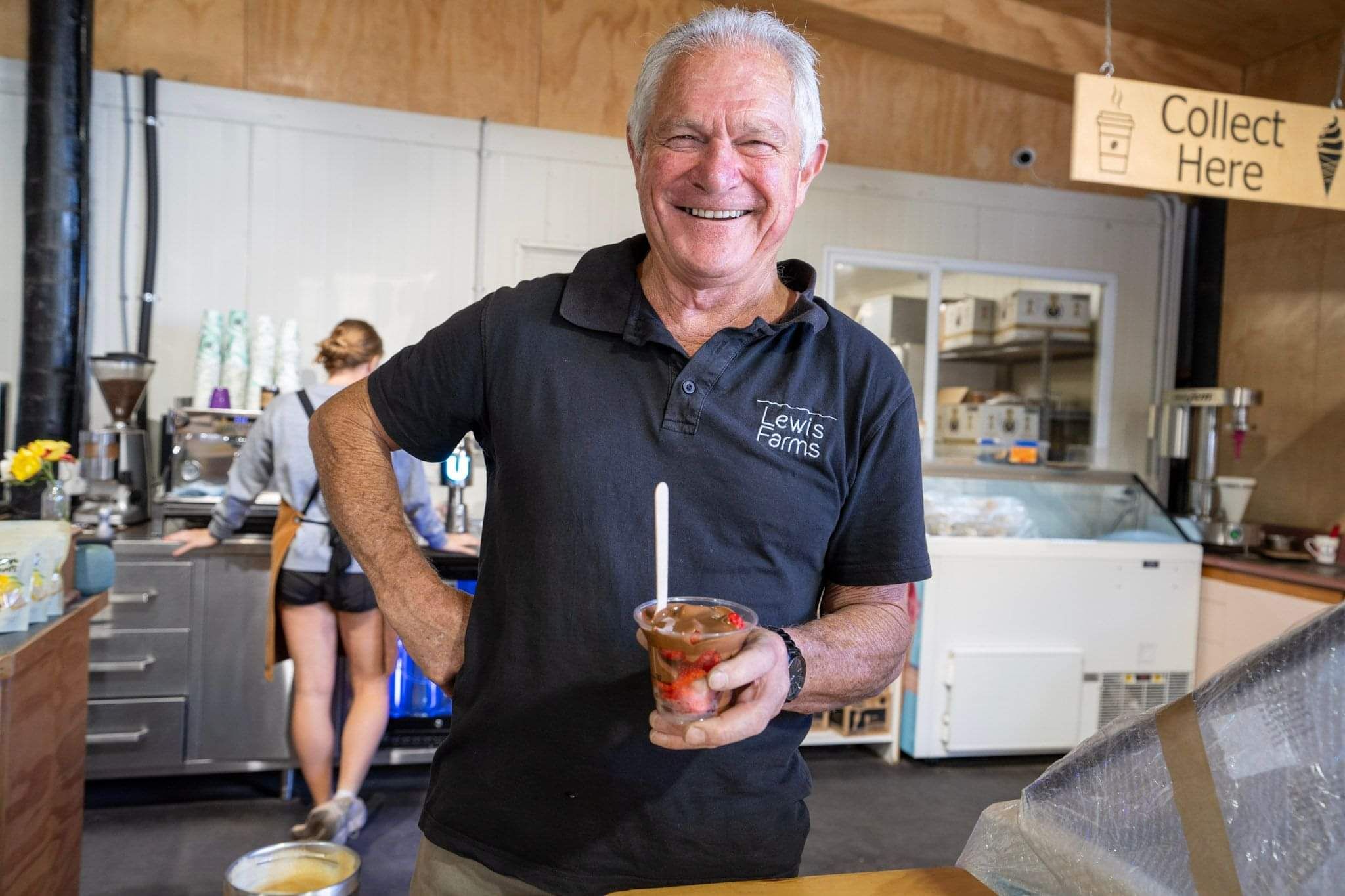

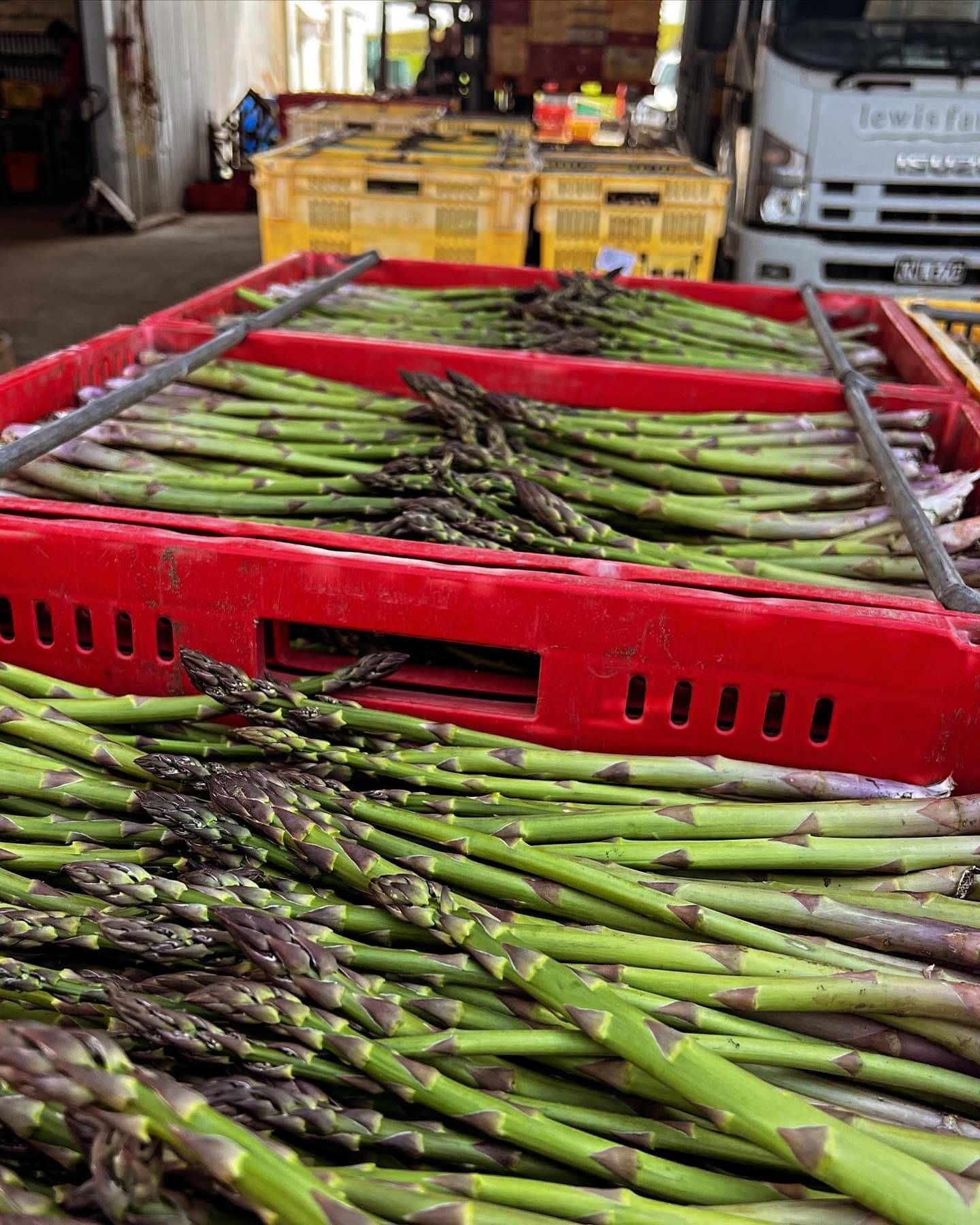
Lewis Farms – Taste of the Horowhenua
Driving along State Highway One, just north of Levin, the sight of new tunnel houses at Lewis Farms signals an ambitious chapter in the farm's history.
This multi-generational enterprise, owned and operated by the Lewis Family, is undergoing significant expansion while thoughtfully planning for the future. With roots in dairy and asparagus farming, the family has steadily diversified into strawberries, and a thriving on-site shop. Today, Lewis Farms employs approximately 170 staff during peak seasons and is a cornerstone of Horowhenua’s local economy.
Background
The Lewis family’s farming legacy spans multiple generations. Cameron, manages the group’s diverse portfolio. With a finance degree from Massey University and a background in banking, Cameron has applied his expertise to enhance the farm’s business strategy.
Lewis Farms operates two primary businesses:
Lewis Dairy: The pastoral arm milks 850-900 cows with a team of seven staff.
Tendertips: The horticultural division specialises in asparagus and strawberries while managing the on-site farm shop.
The diversification into strawberries was driven by the need to balance seasonal labour demands for asparagus. Starting in 2015, the family explored strawberry production to provide year-round employment opportunities. The decision to grow strawberries in tunnel houses marked a pivotal shift. Recognising that outdoor strawberry farming was becoming less viable due to climate variability, the family invested in protective cropping.
“Tunnel houses shield the crops from unseasonable weather, such as hail, cold snaps, and rain, which can compromise quality and shelf life”, says Cameron.
The transition has not been without challenges. In their first year, the farm suffered significant losses due to improperly prepared growing medium, resulting in the loss of the entire strawberry crop. Despite this setback, the family’s resilience and commitment to learning helped them optimise their methods. Today, tunnel houses have doubled production and positioned Lewis Farms as a producer known as growing the sweetest strawberries in the country.
Innovation and Research
Lewis Farms continuously invests in innovation. They are currently trialling a new strawberry variety from the UK, which promises exceptional flavour and a unique crunch. This “IP variety” is exclusively available to three New Zealand growers, showcasing the farm’s commitment to staying ahead of market trends. To learn more about the variety, Cameron has travelled to Tasmania and their consultant has made some recommendations, including to their tunnel house airflows.
Temperature management within the tunnel houses is another area of focus. By optimising temperature readings and adjusting tunnel designs, the farm can achieved a 6% improvement in production, equating to an additional 34 tons of strawberries annually. These refinements highlight the critical role of agronomy in maximising yields.
Lewis Farms is committed to sustainability. Coconut husk (coco coir), used as a growing medium for strawberries, is repurposed and spread across the asparagus fields every two years. This circular approach minimises waste and enriches soil health.
Technological advancements play a significant role in the farm’s operations. The asparagus sorting machine, imported from Germany, processes 34,000 bunches daily, using algorithms to ensure consistency and quality. This efficiency extends to procurement and logistics, where careful planning ensures timely delivery of supplies from overseas.
Farm Shop : A Destination Experience
What began as a modest outlet for asparagus and strawberries has evolved into a vibrant destination and on Trip Advisor, it features #2 on the things to do.
The farm shop now employs ten staff and offers a wide range of local products, including Udderly Organic Milk, Potter Brother and Baked Dane crackers.
The shop’s success has led to further innovations, including the production of raspberry and strawberry jam. This initiative not only utilises surplus fruit but also provides winter employment for retail staff.
“We were told early on that if you’re going to have a strawberry shop, you need an ice-cream machine,” says Cameron. The addition of more machines has reduced wait times and enhanced customer satisfaction.
Visitors can enjoy shaded seating, a children’s playground, and signature treats like fresh strawberries in a cup, covered in Whitaker’s chocolate or real fruit ice cream. The shop also provides a behind-the-scenes view of the asparagus processing and packing facility, adding an educational element to the customer experience.
Despite its successes, Lewis Farms faces challenges, including labour shortages, regulatory requirements, and rising costs. The family’s hands-on approach and adaptability have been key to navigating these obstacles.
“How we grow strawberries in New Zealand is very hard and high risk,” notes Cameron. The farm’s agility and family-oriented management style enable it to respond quickly to changing conditions.
Lewis Farms exemplifies a blend of tradition and innovation. From their roots in dairy and asparagus farming to their pioneering work in strawberry production, the Lewis family has built a resilient and dynamic enterprise. Their focus on sustainability, workforce development, and cutting-edge technology positions them for continued success.
As they look to the future, the Lewis family remains committed to their core values: producing high-quality products, supporting their community, and embracing innovation.
Their future plans include building an onsite village to house the RSE workers. At present their cultural integration is supported by pastoral care initiatives, including a Samoan minister who oversees worker health and well-being.
Their story is one of adaptability, vision, and a deep commitment to community and family farming values.
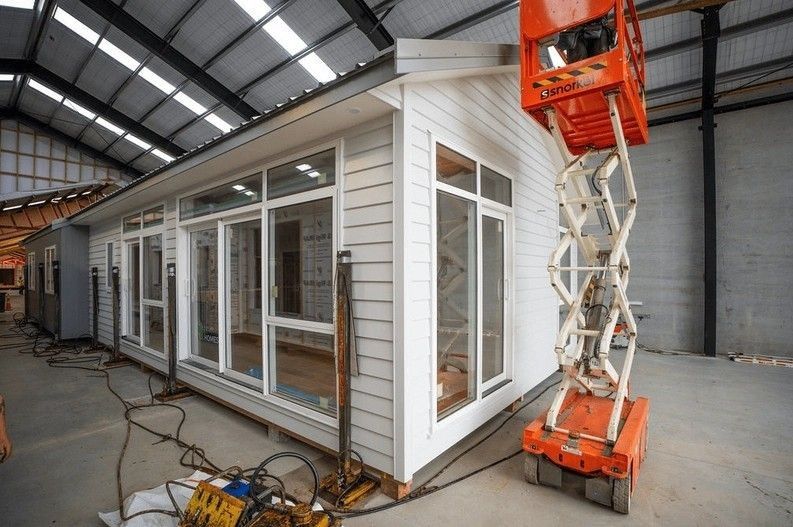
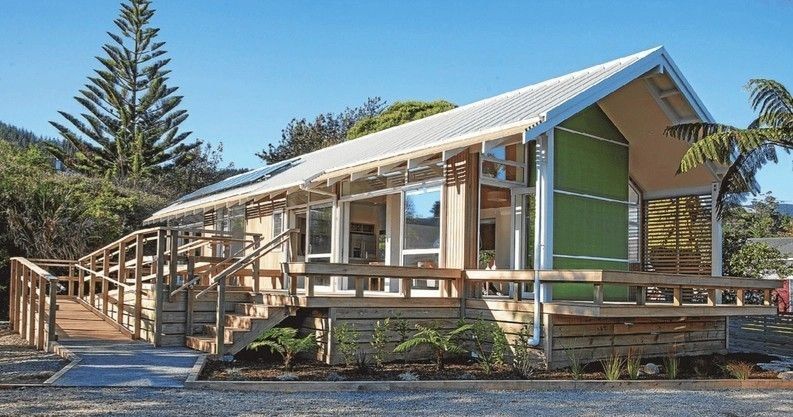
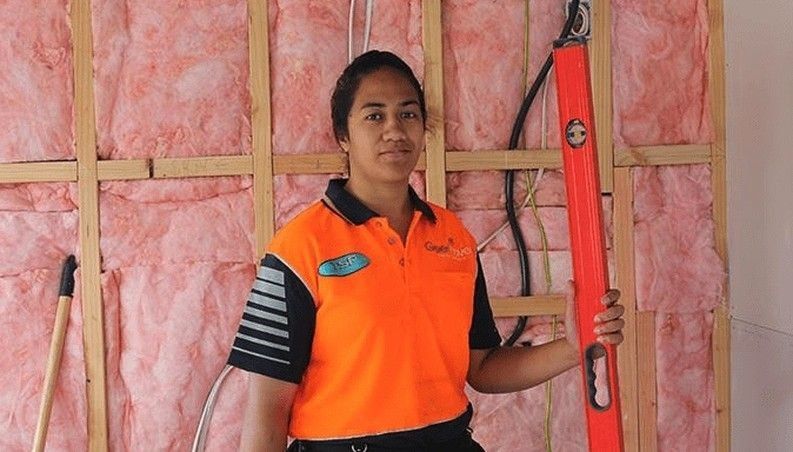
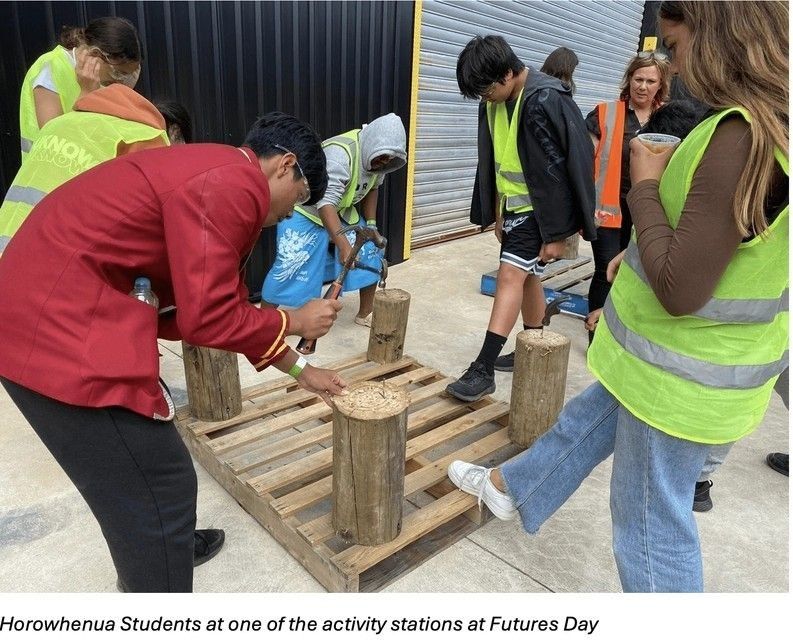
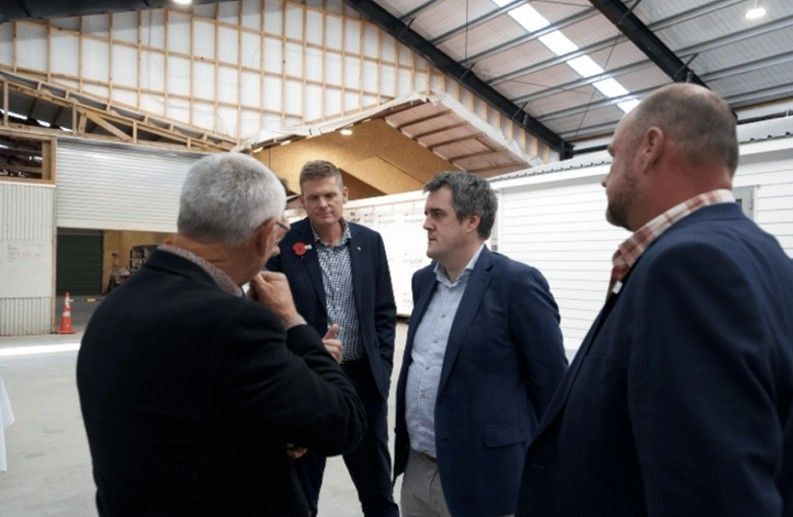

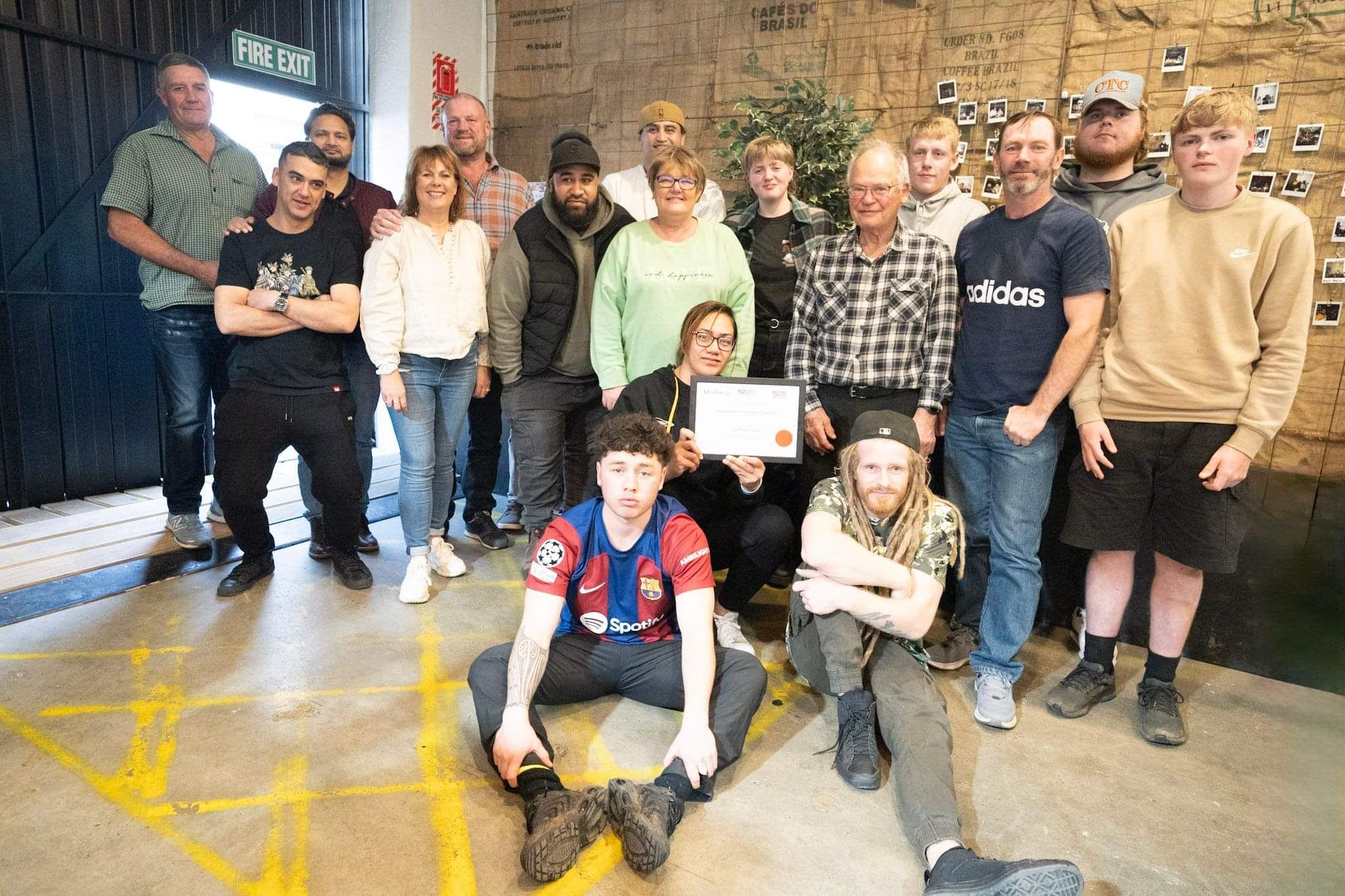
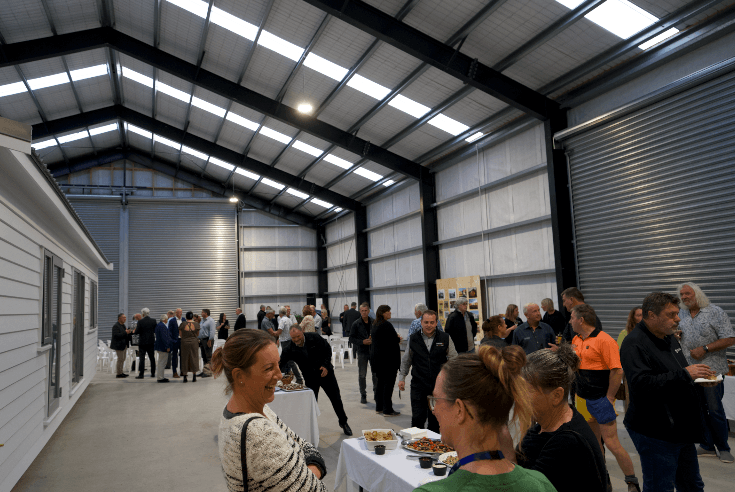

TSP Construction Ltd
THCL spoke with Todd Strode-Penny, director of TSP Construction whose company manufactures architecturally designed, transportable homes under their Greenhaven Homes brand in their purpose-built facility on Hokio Beach Road, Levin.
This state-of-the-art factory, established in 2022 on the former site of General Metal Recyclers is built to global standards on a picturesque 3-acre property adjacent to the Levin Racecourse.
Todd and his wife Natalie established Greenhaven Homes seven years ago. Working with architect Gary Philips, owner of Novare Architecture, Todd recognised the appeal of Gary’s eco-friendly modular concept. This innovative design combined a contemporary look with energy efficiency and sustainability, marking the start of Greenhaven Homes.
Their range of transportable homes now includes Revolution Homes and Lifestyle Homes, allowing the team to cater to first-time buyers, investors, extended family living, second homes and those seeking their dream forever home. Todd notes how Greenhaven Homes’ range of smaller homes has appeal as secondary dwellings where people are setting up homes on their sites for their extended families, or older parents. This ‘shared living’ concept is one that Todd has believed in for some time and is excited to see the market starting to think in the same way.
Using premium locally sourced building materials and suppliers, the company prides itself on delivering unmatched care to every client, ensuring a seamless end-to-end experience from initial consultation to final delivery.
Greenhaven is a pioneer in the transportable home industry, and its reputation for quality and customer satisfaction remains unsurpassed.
“My sustainability footprint is important to me, I reuse and recycle what I can.”
The factory offers a safe working environment for the team, and being undercover they don’t get held up due to poor weather conditions. They minimise waste and maximise efficiency given that there is no need to drive between multiple building sites.
First purpose-built Show Home in Paraparaumu by Greenhaven Homes
“What we offer is certainty – the build price we offer stays the same throughout the build and that is assuring for our customers”.
In the broader market, buyers' uncertainty around final build costs is a big concern. On-site house builds can sometimes exceed budget by over 20% – liquefaction tests, increased costs for materials, and labour rates can change too. Timber products have increased 30% and on-site builds can increase with cladding and glass.
“We can control the environment so we can control the cost.”
The Greenhaven Homes range of top-quality homes is built to a fixed price and to an agreed building timeline offering financial certainty and peace of mind.
Todd, Natalie and their team are hands-on throughout every house build and handle the entire process for their clients from start to finish. They ensure all the necessary approvals, including piles and consents, are signed off by the Council while the house is being built. This allows for a quicker, more efficient, process with clients only needing one point of contact.
“We are a true local business, it’s an exciting business but it is a tough industry. We employ locals and have 26 staff, with six of them being apprentices.”
Greenhaven Homes is committed to supporting the local community.
Todd and Natalie believe in nurturing local talent, regularly taking on gateway students from Waiopehu College, and supporting the 2024 Futures Day. The annual Futures Day delivered in partnership with THCL allows Year 10 students to experience the workplace and real-world environments to provide a better understanding of the pathways to successful careers.
“There is immense satisfaction in completing a home and seeing it being moved to a site in the middle of the night. I love to see my team achieving and apprenticeships mean that my team can build their own homes one day”.
One team member is Joy Tufuga, who began her apprenticeship at Greenhaven and now leads her own team.
Joy who began her studies in early 2018 at the UCOL’s campus in Horowhenua, completing her New Zealand Certificate in Construction Trade Skills studies, was born and raised in the Samoan village of Salelologa Savai'i. Her dream is to help and provide for her family and to be a good example for her younger siblings.
Todd and Natalie’s investment in their staff is evident in their support for professional growth and development, ensuring a skilled and motivated workforce.
“This is a safe place for the team to work in. I am big on culture and I have had my team here for a long time. We only employ the best.”
“Greenhaven Homes isn’t a franchise and won’t ever be due to my pride in the homes we build. I love seeing houses being built here. I have a passion for this business, and our clients often become our friends.
TSP Construction and Greenhaven Homes Show Homes are located at 74 Hokio Beach Road, Levin in Horowhenua.
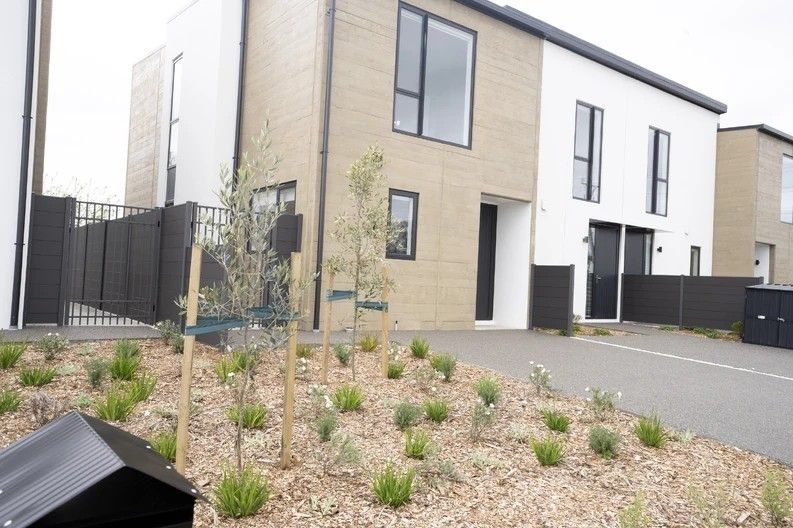
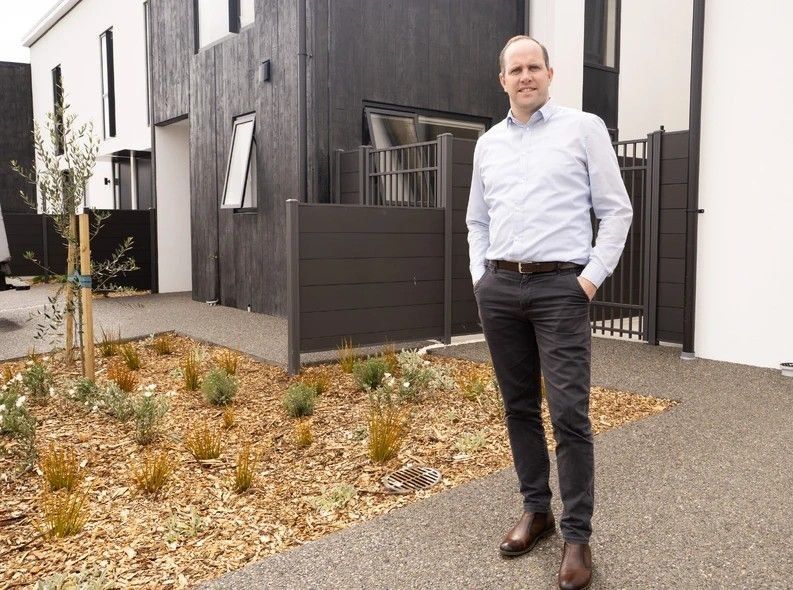
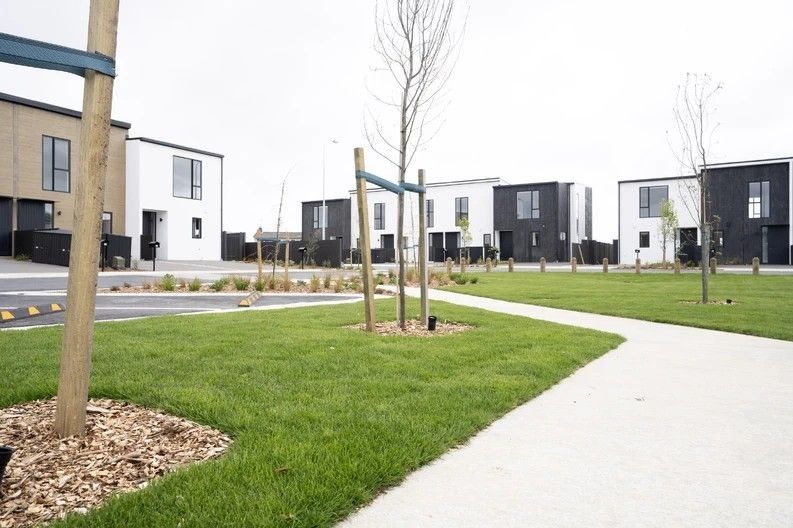

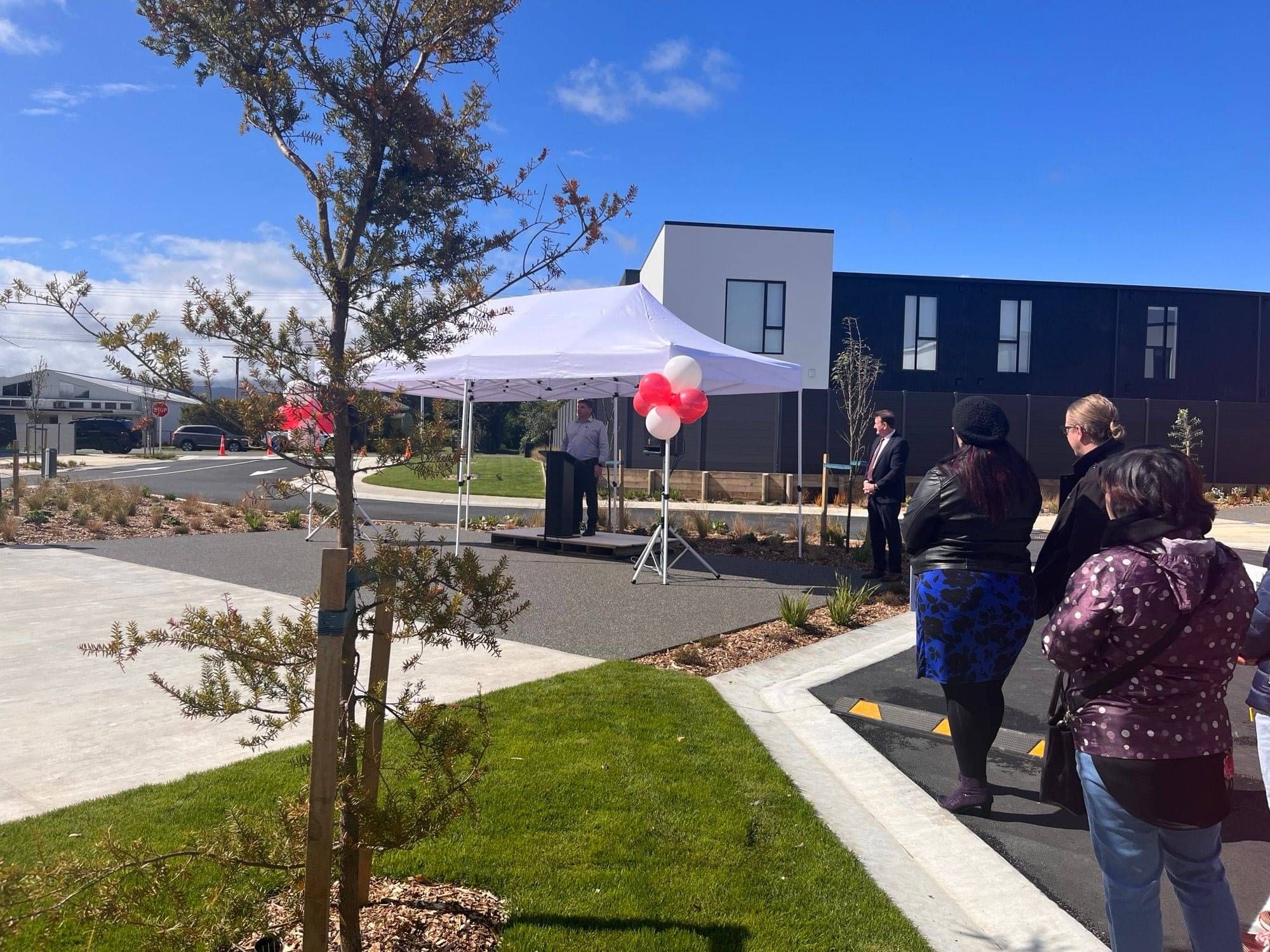
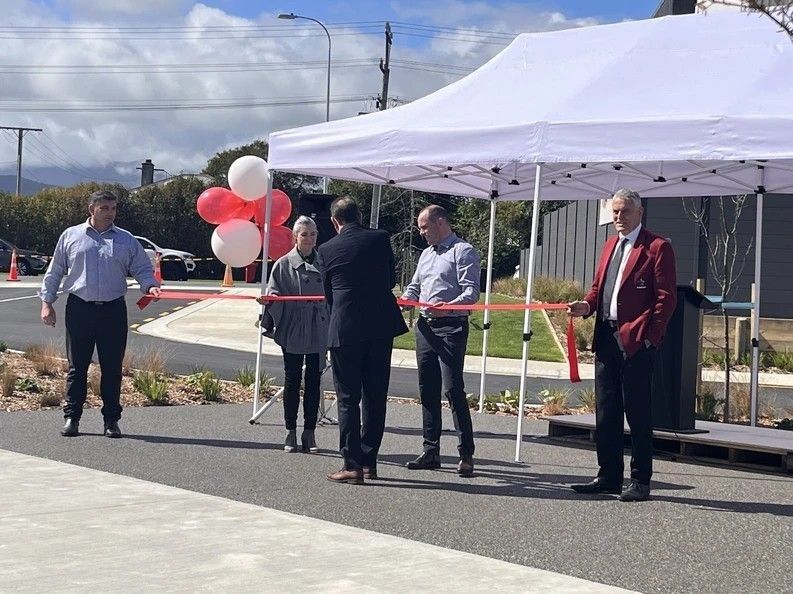
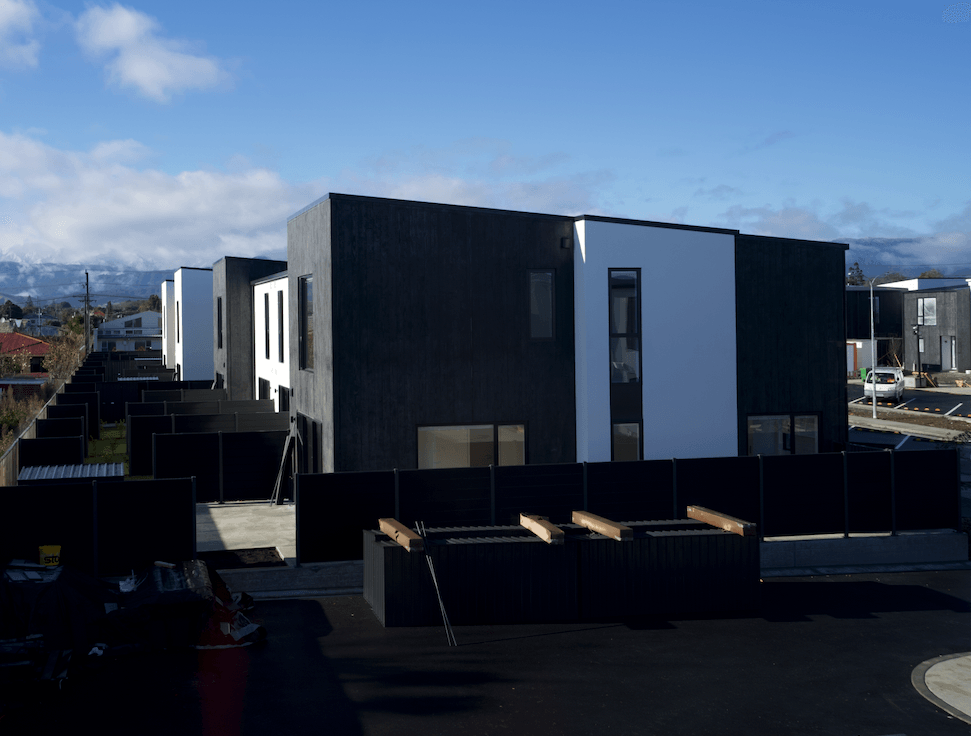
Mabel Central Development
October 2023
The Horowhenua region is growing rapidly, with exciting upcoming commercial and residential opportunities guaranteed to put Levin ‘on the map'.
One such new housing development nearing completion, poised to impact Levin's housing landscape significantly, is Mabel Central, situated off Mabel Street.
This unique development is the first of its kind in the Horowhenua - a multi-residential community of townhouses ensuring that it accommodates a broad spectrum of lifestyles.
The project embodies a vision of modern, sustainable living for the new residents. With a commitment to sustainability, a range of housing options, and a focus on community well-being, this development is poised to become a model for future residential projects in Levin.
The two-storey dwellings are positioned in terraced blocks of 4-6 units around a central shared open space and one-way access road. (At the time of writing, 42 of the 43 townhouses are sold).
Once a family property with an old homestead on the edge of town, the land was purchased in 2021, and construction began in August 2022.
Homestead Construction, a local family business, developed the housing complex.
They have been constructing homes and commercial buildings throughout the Lower North Island since the 1970s. Their recent work includes the Erskine and Paetutu housing developments in Wellington/Hutt, with a total of 142 townhouses combined. Architect Tobin Smith won NZIA awards for both developments.
Another recent Homestead Construction project was the construction of the NZ Campus of Innovation and Sports Athletes Village in Upper Hutt. NZCIS was officially opened on Thursday, 22nd of June 2023. The opening was attended by Rt Honourable Prime Minister Chris Hipkins and Finance/Sports Minister Grant Robertson. The Athletes Village comprises 50 2-bedroom units across seven blocks and a shared Amenities building. This recently hosted the Swedish national soccer team during the FIFA Women’s World Cup in August.
Homestead Construction specialises in providing end-to-end 'Design & Build' construction management services covering the whole project: Feasibility, Design, Project Management, Permits/Consents, Earthworks, Construction, Interior Fit-Out, Landscaping, and more.
In Horowhenua, construction is nearing completion for the new Levin Waitarere Surf Lifesaving Club building, an excellent new asset for the club and local community. Homestead Construction worked with stakeholders from the design stage through to construction. This project is scheduled to be completed by November 2023.
The Horowhenua Company Ltd. met with Stephen, the Project Manager for the Mabel Central development, to take an inside look before the upcoming handovers to the residents.
Why did you decide to do this complex in Levin?
“There was definitely a market for it. This type of multi-level residential living doesn’t exist currently in Levin, and with our previous experience with housing complexes, the timing was right for the development.
We have completed a lot of this type of development in Wellington in the past, brought our experience back here, and took it to market. We used what we learned (what works and what doesn’t) to develop this housing complex.
Here, we bring our business and construction experience, especially in the cities, to a regional area. It pretty much shows it can be done, and we have done it. This style of living means free weekends, and it appeals to a portion of society that wants to live like this with the balance of being in a country town. We are bringing city living to a rural area. It definitely has its advantages”.
What made you decide on this site?
“It was one of the largest existing residential properties available for development in Levin, at 9,500 square metres. What sold it as a location was its proximity to local amenities, including the railway station and town centre, with kindergartens, primary, intermediate, and secondary schools all within 1km.
We have also purchased the property next door and are planning stage two.”
Who has purchased the homes?
“It’s a range of ages and mostly from outside the region. Housing developments like this bring new people to town, so the knock-on effect is it brings new business too.
The age group varies from young families, first home buyers, the investor market, and singles over 50, because of the maintenance-free lifestyle.
We had more buyers from outside the region, for example, from Upper Hutt and Wellington, due to the proximity to Wellington now we have the new expressways open.
These allow for city living in a rural landscape, the view of the Tararua Mountain range, and the proximity to beaches too”.
Why are these types of homes so sought after?
“Apart from the community lifestyle and maintenance-free component, everything in the 2- or 3-bedroom townhouse is finished. They come complete with quality floor coverings, washing machines, dryers, and dishwashers - everything someone needs has been considered, even the shelving in the cupboards”.
What other finishings have you included in the homes?
“We have really thought this through for the buyers. Each home has a private courtyard with planting throughout. There are also ranch sliders to create an indoor-outdoor flow from the lounge to the courtyard.
Because these are terraced homes constructed from concrete, this allows for a more energy-efficient home as well as having acoustic and fire safety benefits. They are double-glazed, have heat pumps, and are fitted with heated towel rails and fabric roller blinds.
We also thought about the future, so we added electric vehicle charge port infrastructure to each townhouse for future connections to EV chargers.
Every townhouse has an onsite car park, letterbox, and clothesline, with provision for secure bike and bin storage”.
What are the next steps?
“Currently, we are planning for stage two, which will have around 12-13 townhouses. Once completed, we would have built 56 homes and created a thriving little community.
We look forward to seeing families here and kids playing in the central shared community space. I’m looking forward to welcoming people to Pipi Place”.
Pipi Place was officially opened on 11th October 2023
Horowhenua looks forward to welcoming its newest residents as we watch this community grow.
This is Levin’s first multi-residential townhouse development, which includes communal areas, promoting a sense of community and healthy living.
As Levin continues to grow, Homestead Construction’s Mabel Central project has redefined the standards of housing and urban planning in the area.

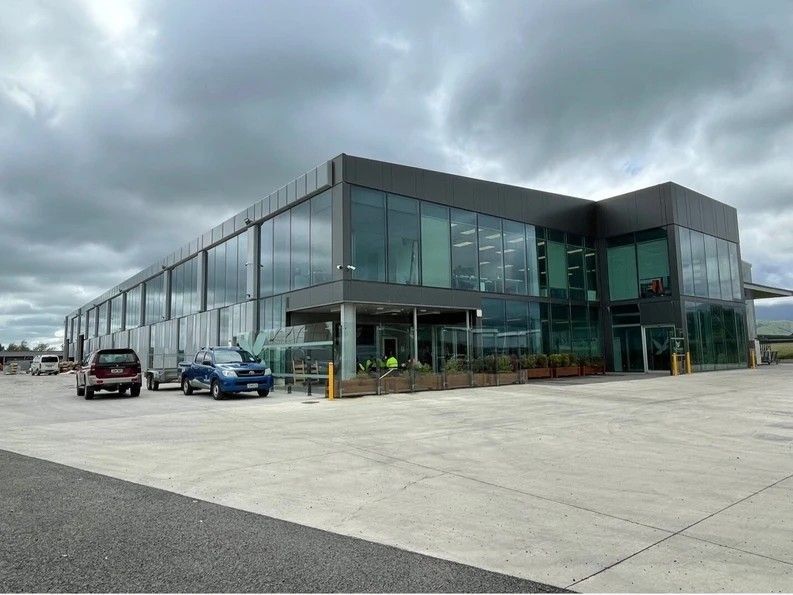
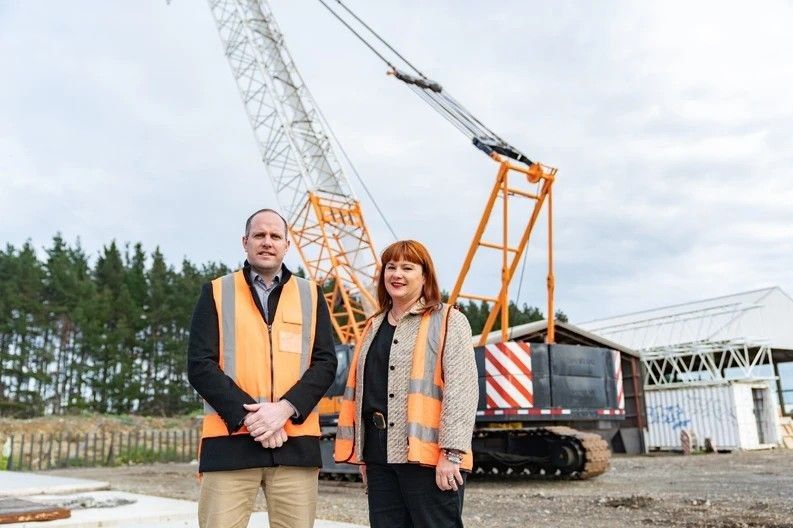
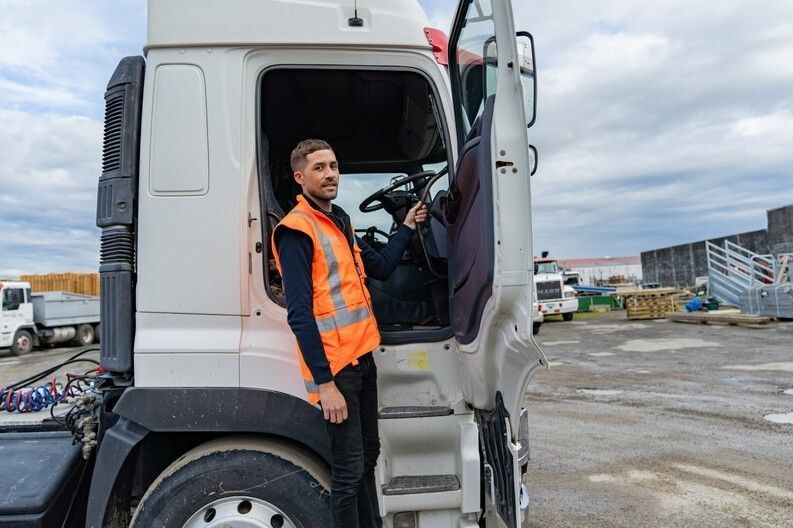
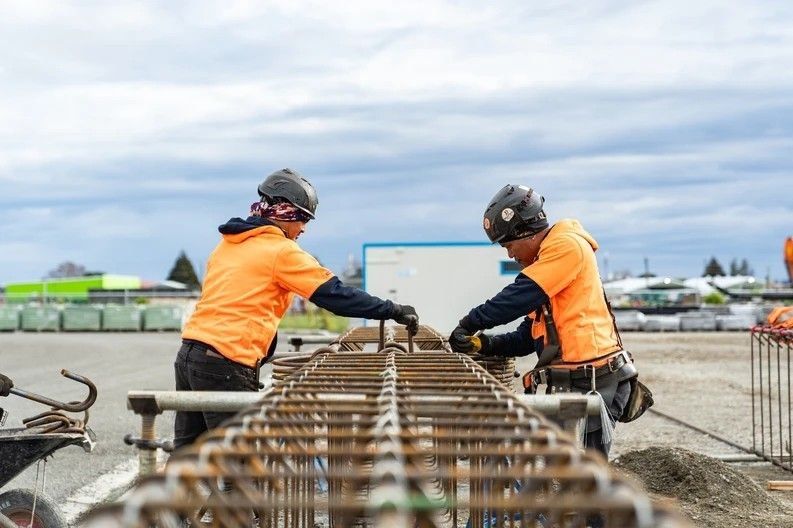
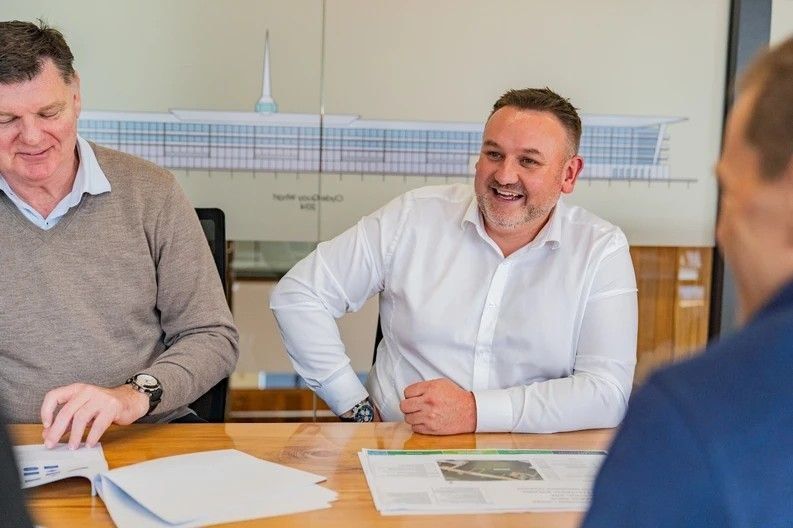
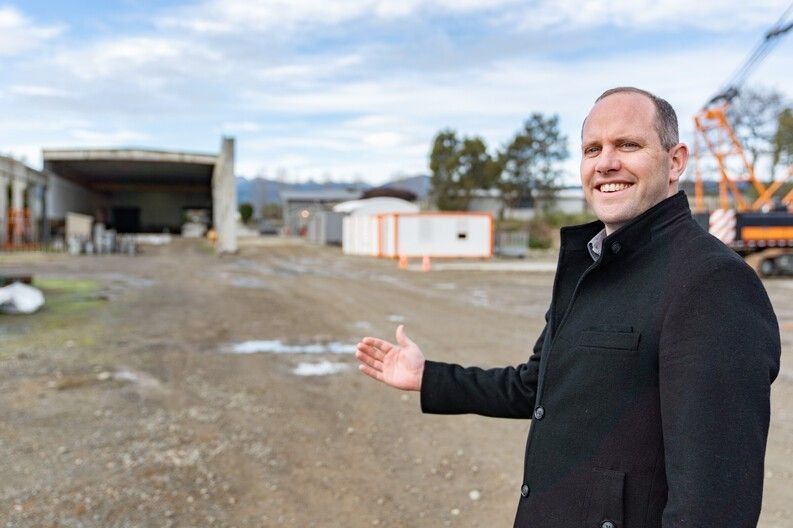
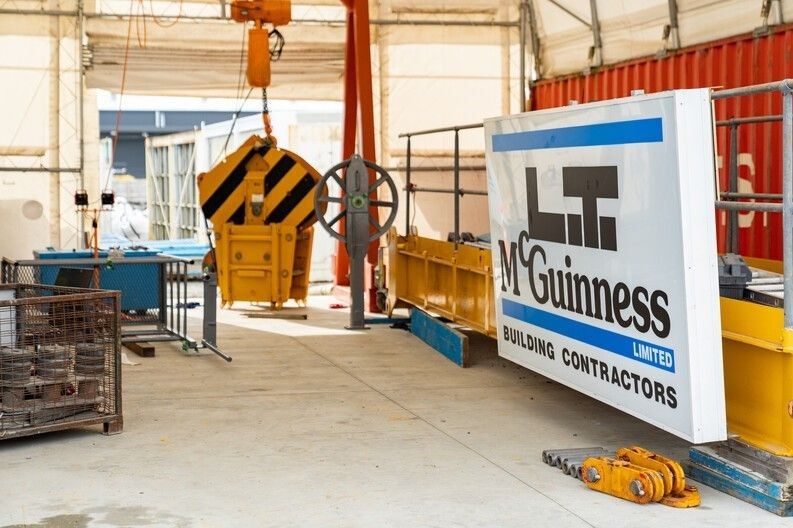
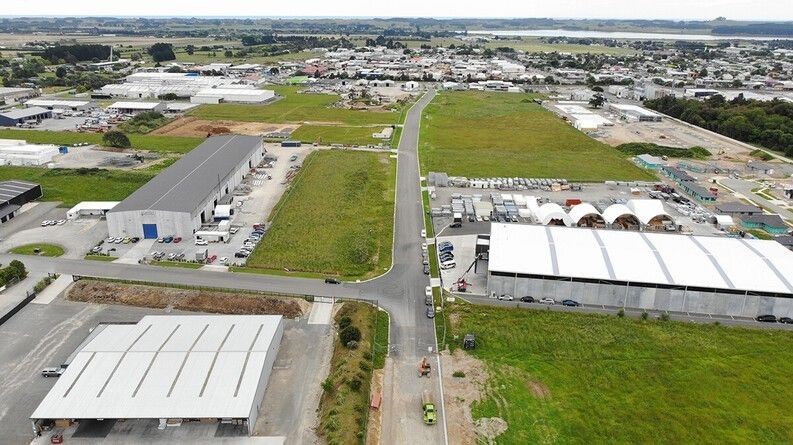
Enterprise Drive Development
The Enterprise Drive Development, located in Levin, Horowhenua, represents an active economic development initiative that is transforming a long-vacant parcel of industrial land into a thriving industrial hub. The project showcases the power of collaboration in driving regional growth and explores the development's background, key milestones, economic outcomes, and broader impacts on the Horowhenua District.
In 2019, unproductive land on Enterprise Drive was purchased from the Horowhenua District Council. At the time, the region faced limited industrial and commercial growth, and the land had remained under-utilised for years.
Recognising the potential for economic revitalisation, Horowhenua New Zealand Trust leveraged its strong local connections to initiate the development. HNZT, established in 2018, identified and facilitated this opportunity. Trustee,Evan Kroll, learned about Thermosash Windows' need for industrial land and reached out to them. After assessing a range of potential land options, HDL acquired the 13.8-hectare lot through an open market tender.
The philosophy behind the development of Enterprise Drive was centred around catalysing investment in the area rather than solely focusing on maximising profits for Horowhenua Developments Ltd. HDL aimed to attract third party inward investment into the region.
Melissa Hanson, Property & Development Manager for THCL/HDL encapsulated this approach, stating,
"It's been about getting the infrastructure in place, bringing it to market quickly, and empowering people to make choices about future purchases and investments."
This approach set HDL apart from other developers by prioritising collaboration, partnerships, and the overall economic development of the region. HDL's approach also encouraged locals to expand and enhance their own facilities, solidifying the Enterprise Drive Development and the surrounding area as the go-to destination for industrial development. By creating an environment that attracted other developers and businesses, HDL contributed to the expansion and growth of the local community.
Melissa Hanson provided invaluable insights into the strategic planning and execution behind the development of Enterprise Drive.
"We were purposeful about who we sold to, aiming for end uses that would bring the best economic and community benefits." This approach has resulted in a growing industrial area that supports local employment and economic activity, reinforcing Levin's reputation as a prime location for industrial development.
While not yet fully developed, (with approx. 44% of the land developed) success is evident in the diverse businesses it has attracted to date. The Crown purchased 4 hectares for a state-of-the-art Archives NZ repository, selecting Levin from a shortlist of13 potential sites across the lower North Island. This high-profile acquisition signalled confidence in the region's growth potential.
The development of Enterprise Drive is a prime example of economic development in action. To date the project has attracted significant inward investment, creating a ripple effect of positive social and economic impacts. The collaboration between HDL, HNZT, THCL, HDC, and Electra, was instrumental in overcoming initial challenges and ensuring the project's success.
In 2020, a $2.9 million capital investment grant from the New Zealand Government under the Crown Infrastructure Partners COVID recovery initiative was a catalyst for even more rapid development. This funding enabled HDL to accelerate the project by at least five years, significantly boosting the region's economic prospects.
The sale of large land lots allowed purchasers to further subdivide if needed, providing flexibility and fostering a secondary market for smaller section sales. This model ensured that the right ownership and businesses were attracted to the area, enhancing its economic viability.
Long standing local business Tatana Contracting played a key role in the development of Enterprise Drive, ensuring that the essential groundwork was expertly handled. This foundational work was critical in transforming the land into a functional and attractive site for future business developments.
Chevy Tatana explained, "Our involvement in Enterprise Drive was as the main civil contractor, laying all the services and completing the roading from Bridge Street to Cambridge Street." This infrastructure improvement facilitated smoother logistics and operations for local businesses, including their own. "Having a crew working locally on Enterprise Drive has kept us local and reduced travel," Chevy added.
Other notable businesses, such as LT McGuinness, have also invested in the development. They purchased a large section,subdividing it for mixed-use tenancies. This strategic move has attracted further downstream investments, including Carters, Tidy Slabs, Advanced Electrical, and Komatsu, creating a vibrant industrial ecosystem.
David Aldred, LT's Central Region Manager, highlighted their substantial investment in the development which has attracted major national tenants, further boosting the region's economic growth.
"We've been about finding national tenants to fill up our business park. So far, we have secured Komatsu, Carters, and Advanced Electrical as tenants, all of which bring significant employment opportunities to the region."
Catalysing Local Investment and Expansion
The development has acted as a catalyst for local investment, encouraging businesses to leverage and enhance their existing assets. For example, the investments made by other developers and businesses. The Wayne Bishop Group initiated a secondary industrial development on Bush Street, offering 15 units designed for tradies, industry, and manufacturing. This development not only created new business spaces but also boosted the local construction sector. Similarly, the relocation of United Steel from Petone to Levin and the expansion of Latteys' factory in Roe Street underscore the project's success in encouraging businesses to extend and improve their facilities. These investments have created a ripple effect, enhancing the region's economic vitality and making Levin a more attractive location for future developments.
Stephen Griffiths, the Development Manager at Homestead, described the approach, investment and positive impact of their involvement in the Enterprise Drive development.
Homestead's strategy is to attract businesses from outside the region, thereby injecting new economic activity into Levin. "We purchased the land to attract people and businesses from out of town," Stephen shared. The benefits of Levin's strategic location, resilience, and affordability have been pivotal in attracting businesses, which in turn has significantly boosted local employment. "Enterprise Drive has added to the employment opportunities to the town, benefiting not only contractors but people that live here," he noted.
The supportive local council and excellent infrastructure already in place were also key factors in facilitating smooth development. "Having land available for subdivisions has really helped us in our business growth and in attracting new businesses to Levin," Stephen concluded.
Homestead's investment has not only provided immediate economic benefits but also set the stage for sustained growth and development in the region.
"The strategic location of Levin, combined with its affordability and resilience, has made it an ideal spot for attracting businesses and fostering economic growth."
Collaboration and Social Impacts
The project has also had wider social impacts, not only creating local and sustainable jobs,improving employment quality, and fostering community growth. The relocation of Thermosash staff to Levin is a prime example of how the development has positive social outcomes by providing affordable housing and employment opportunities.
David Aldred spoke on the collaboration and local community impact of their development. "Since we established, we've set up a number of trade accounts around the local market. Our plant servicing, warrant of fitness, and other logistics are done locally, supporting local businesses," he shared. LT McGuinness's partnership with Tatana, a local contractor, has been instrumental. "We've worked closely with Tatana for all our site works, roading, and logistics facilities. This collaboration has strengthened local employment and economic activity," David added.
The Enterprise Drive Development continues to attract investment and development.Homestead Construction Ltd. has purchased multiple sections for further development, and the market remains robust. The upcoming Ō2NL (Otaki to North Levin) project, set to begin in 2025, will further enhance the region's connectivity and attractiveness for investment.
The Enterprise Drive Development continues to grow, the district stands to gain even more from increased employment, investment, and economic activity. The collaboration between independent agencies and stakeholders has set a strong foundation for future development, ensuring long-term prosperity for the region.
Make an enquiry
Want to connect? Get some help with your business? You've come to the right place. Either email or call, we'd love to hear from you.
Room bookings info@thcl.nz
Hendrix Warren - Business Growth Manager
027 308 9297 hendrix@thcl.nz
© 2025 The Horowhenua Company Ltd
8 Bath Street, Levin 5510